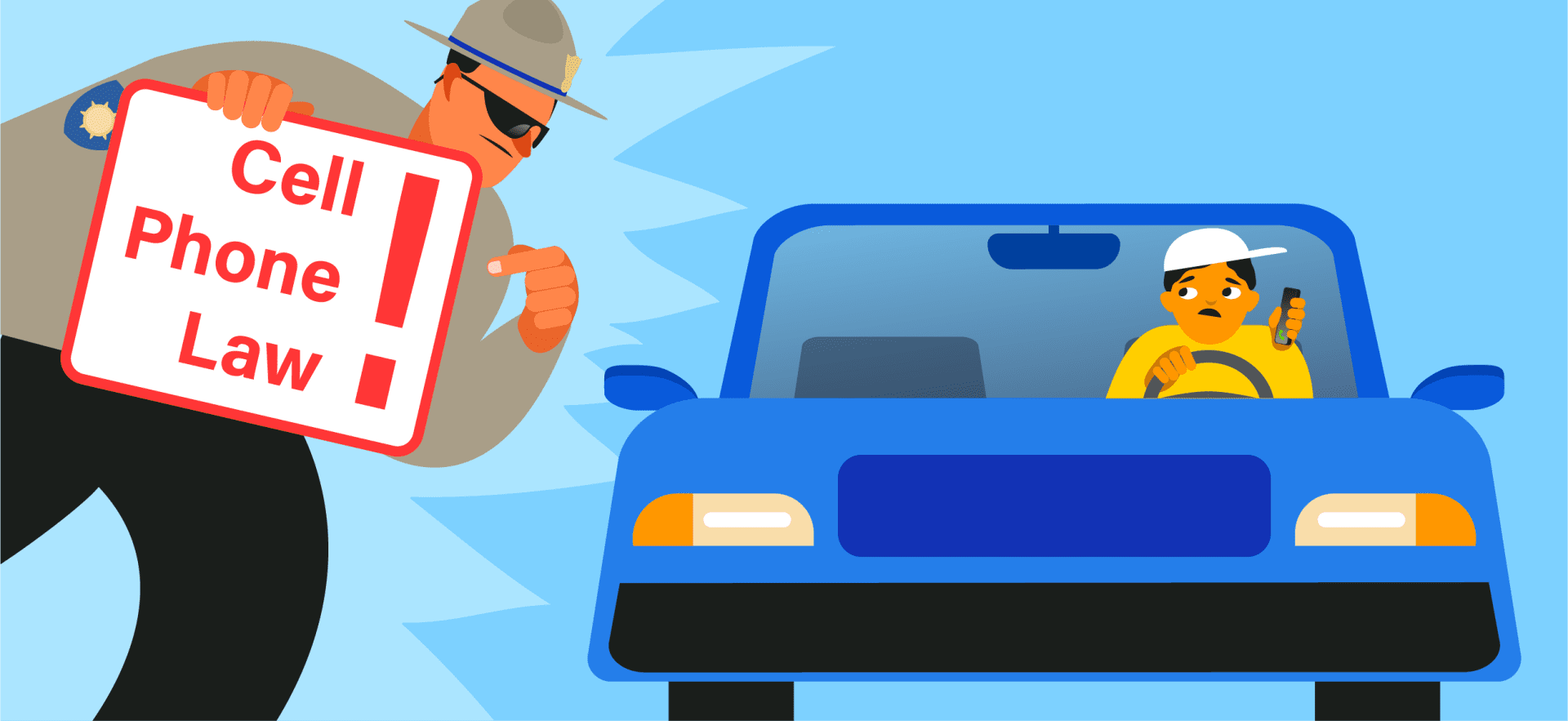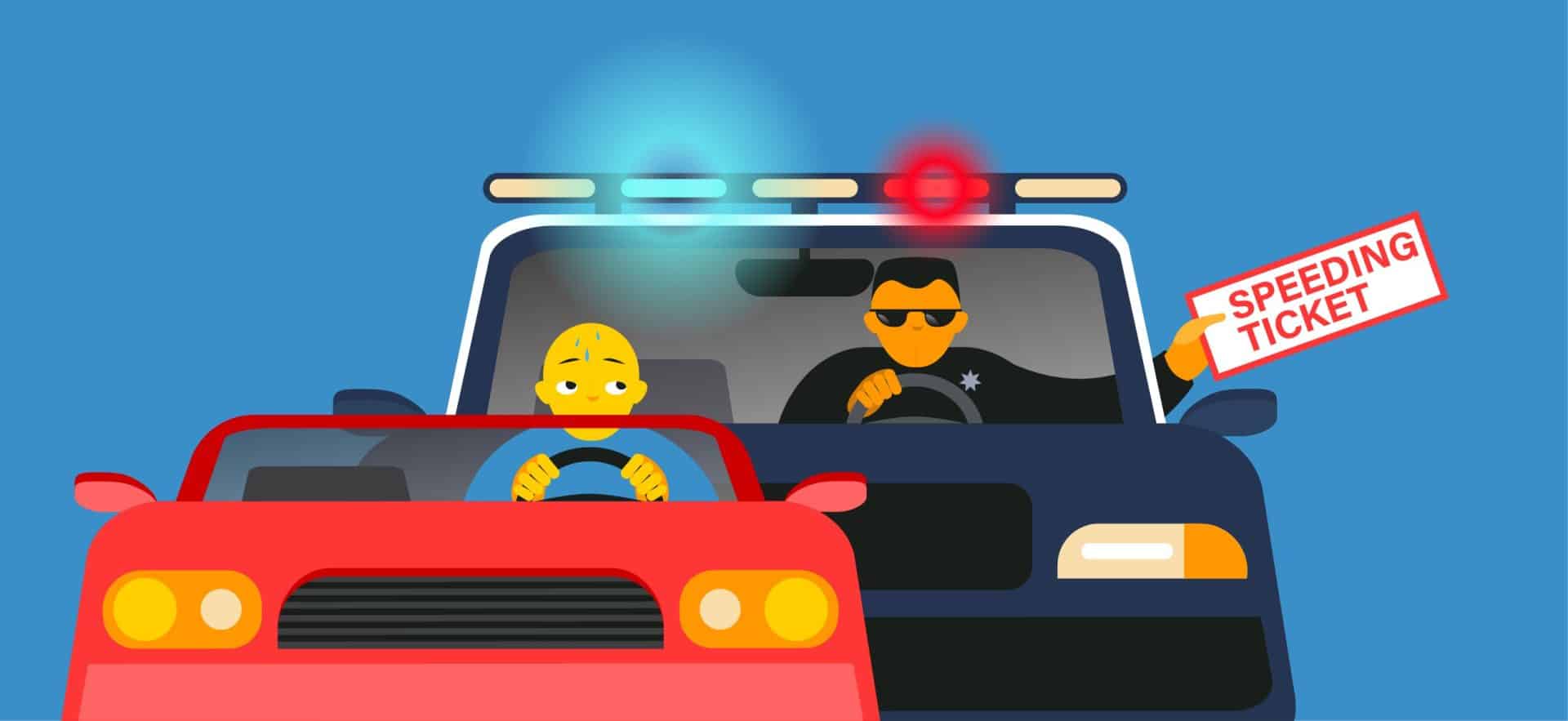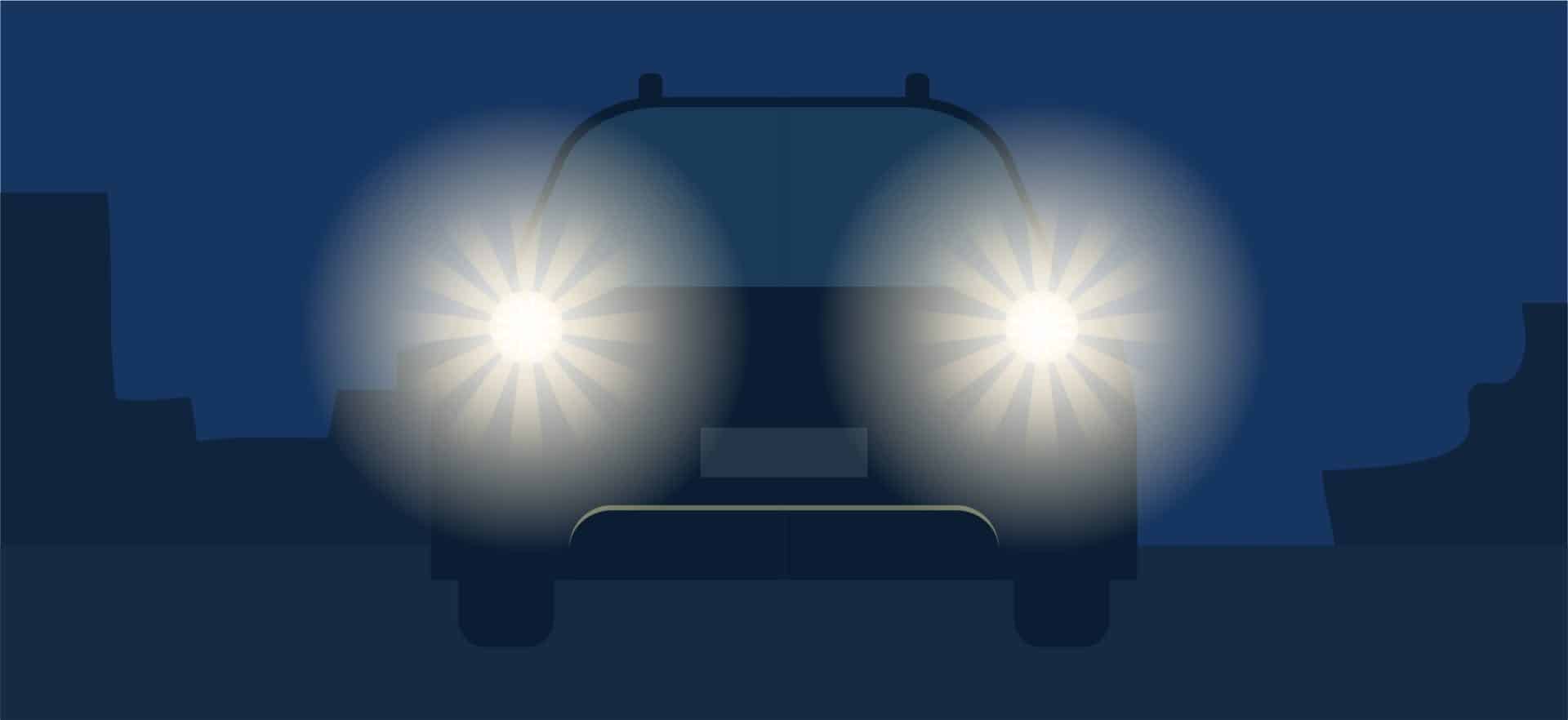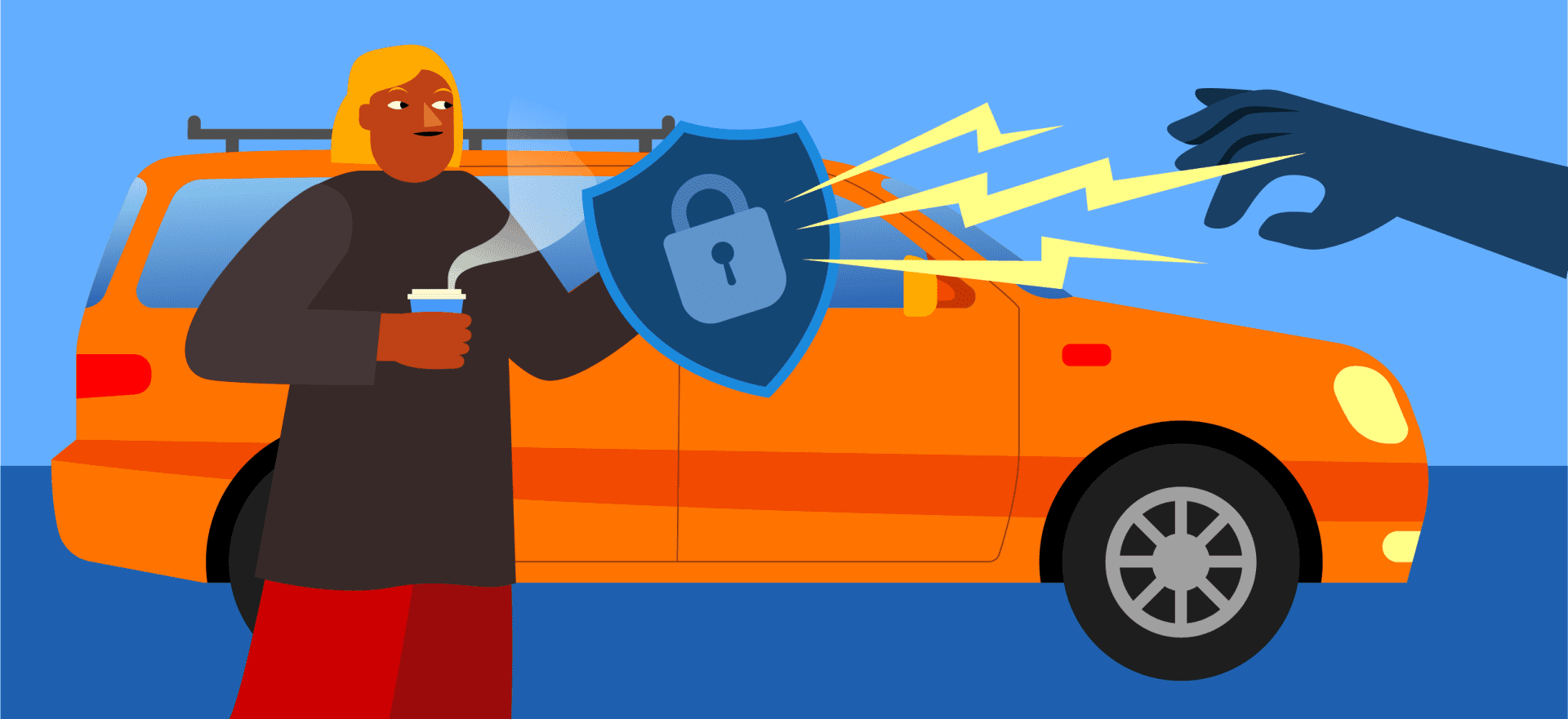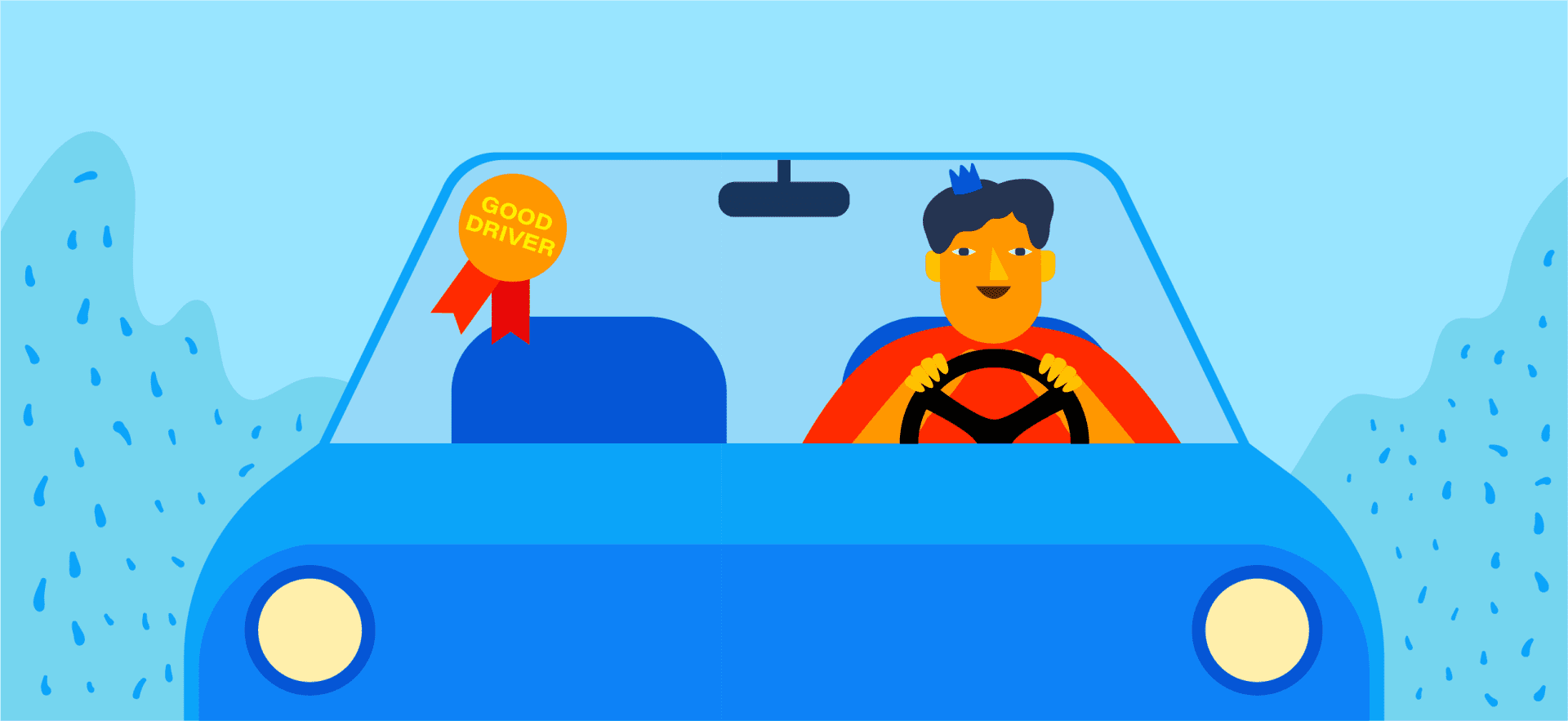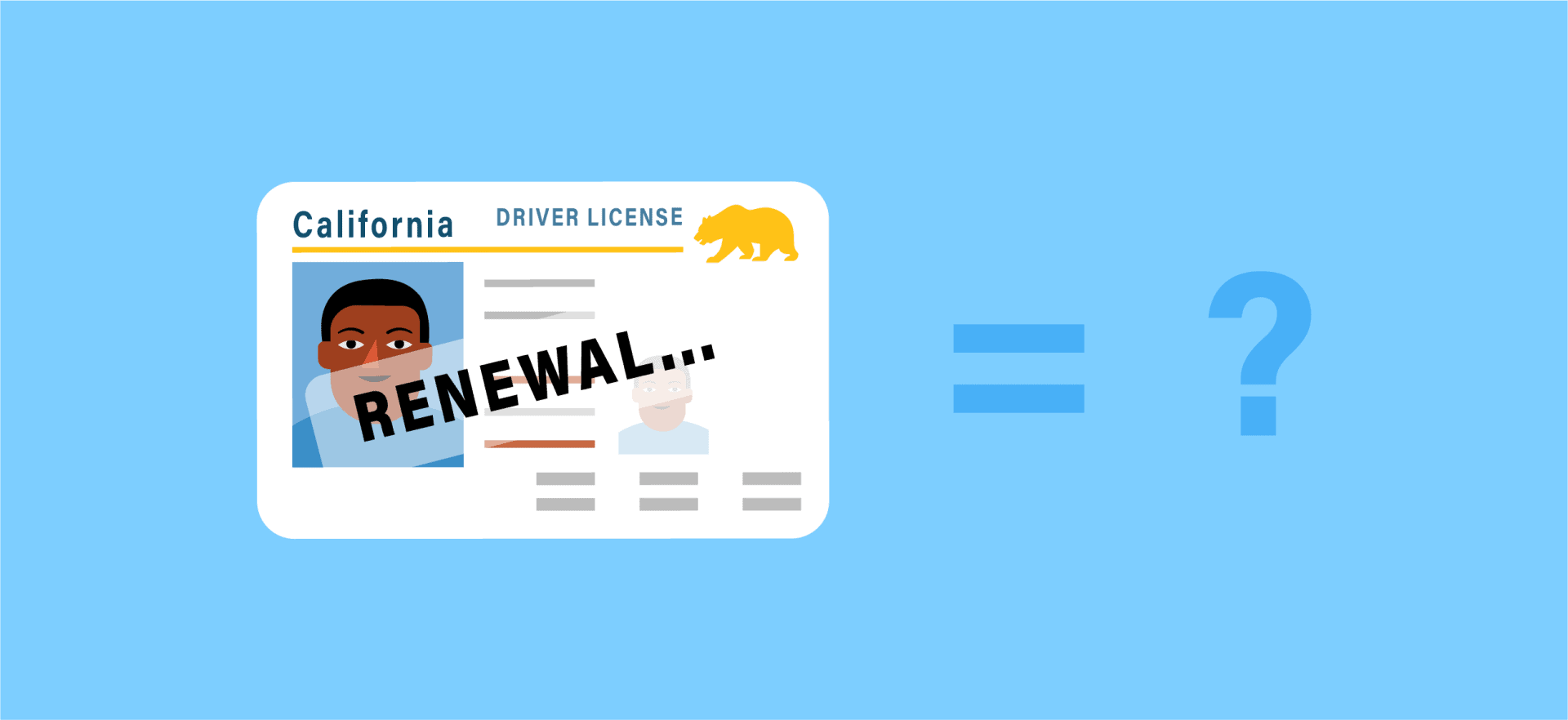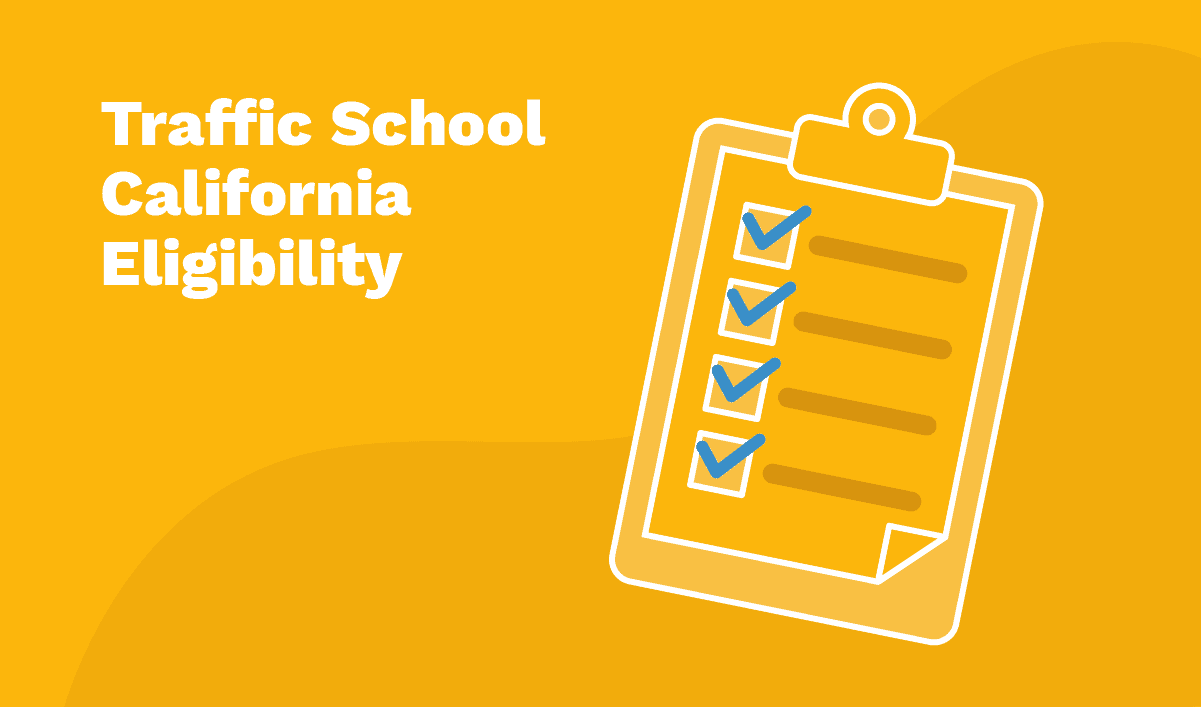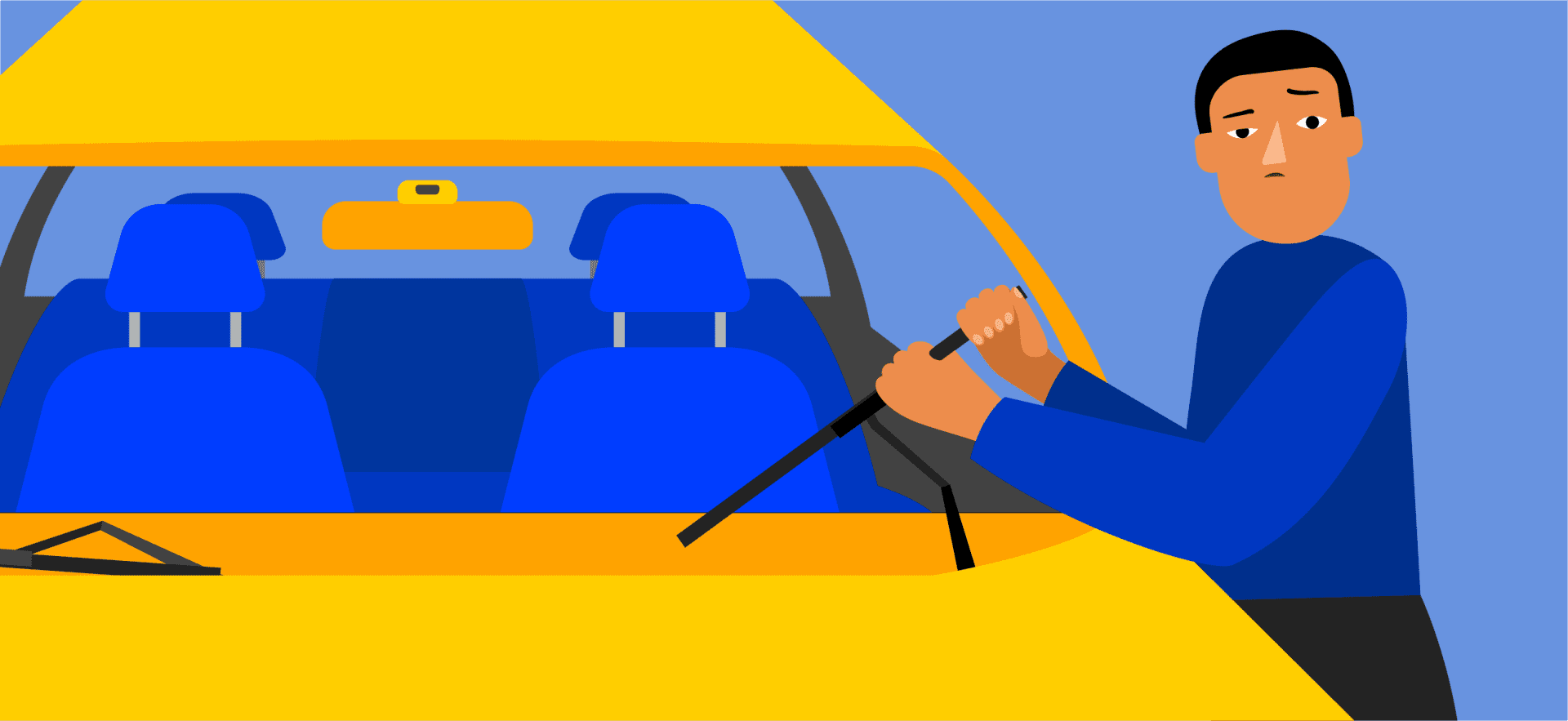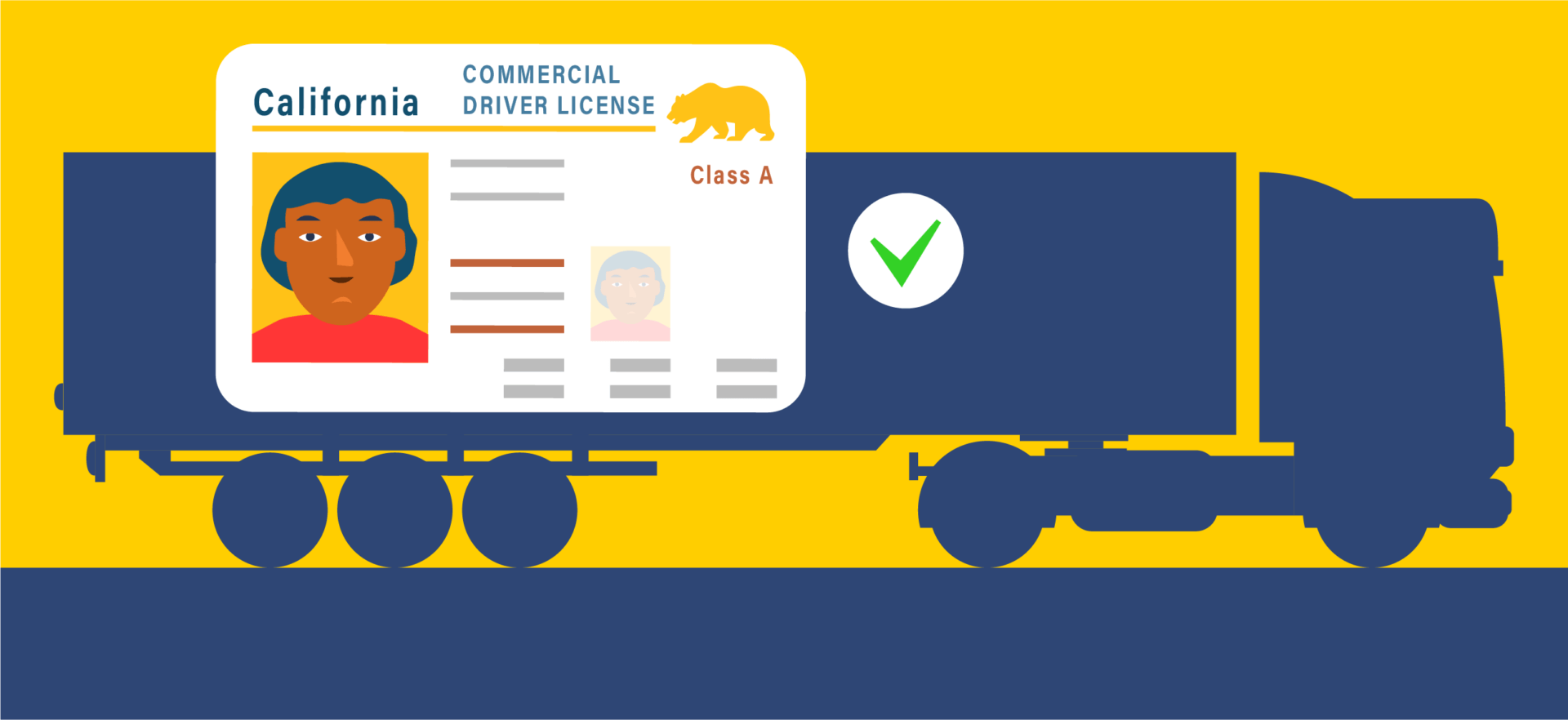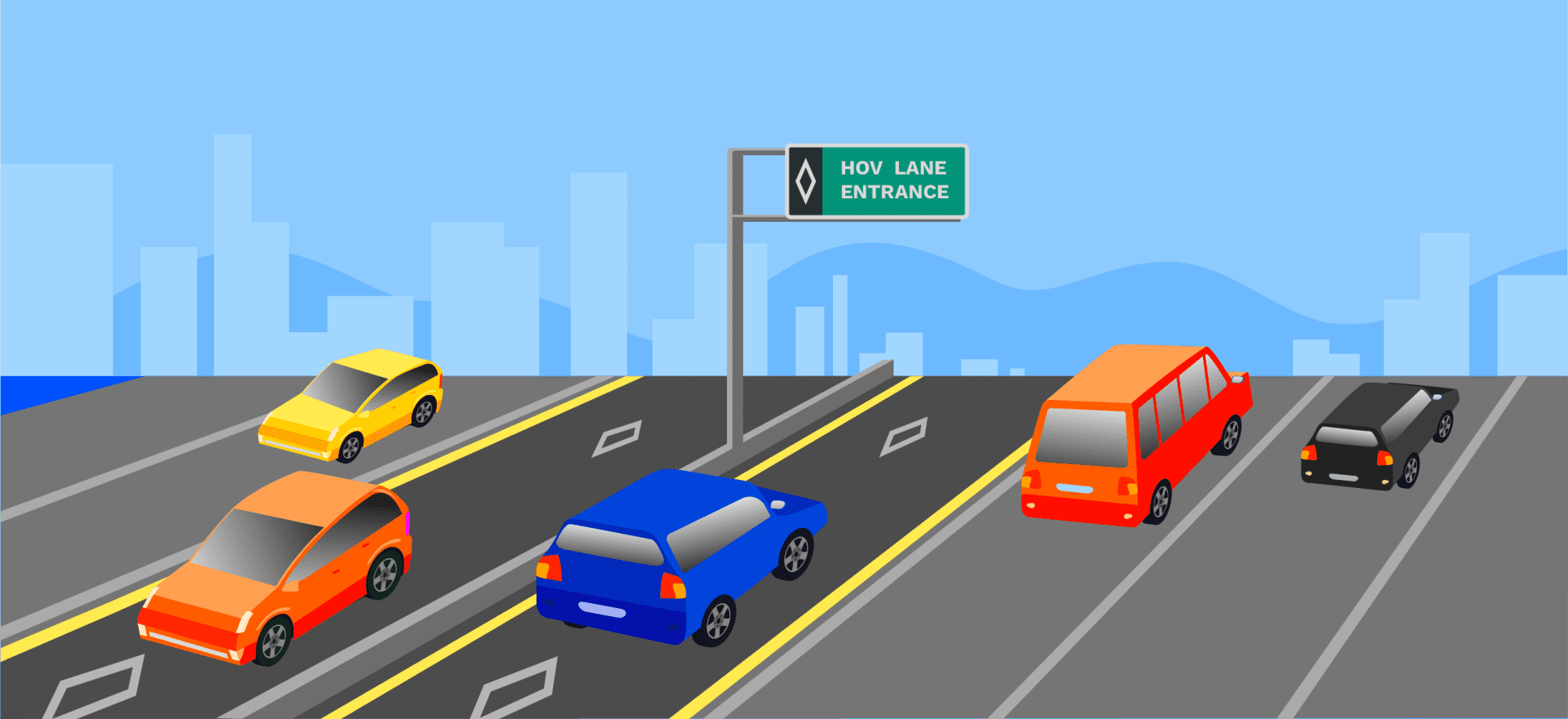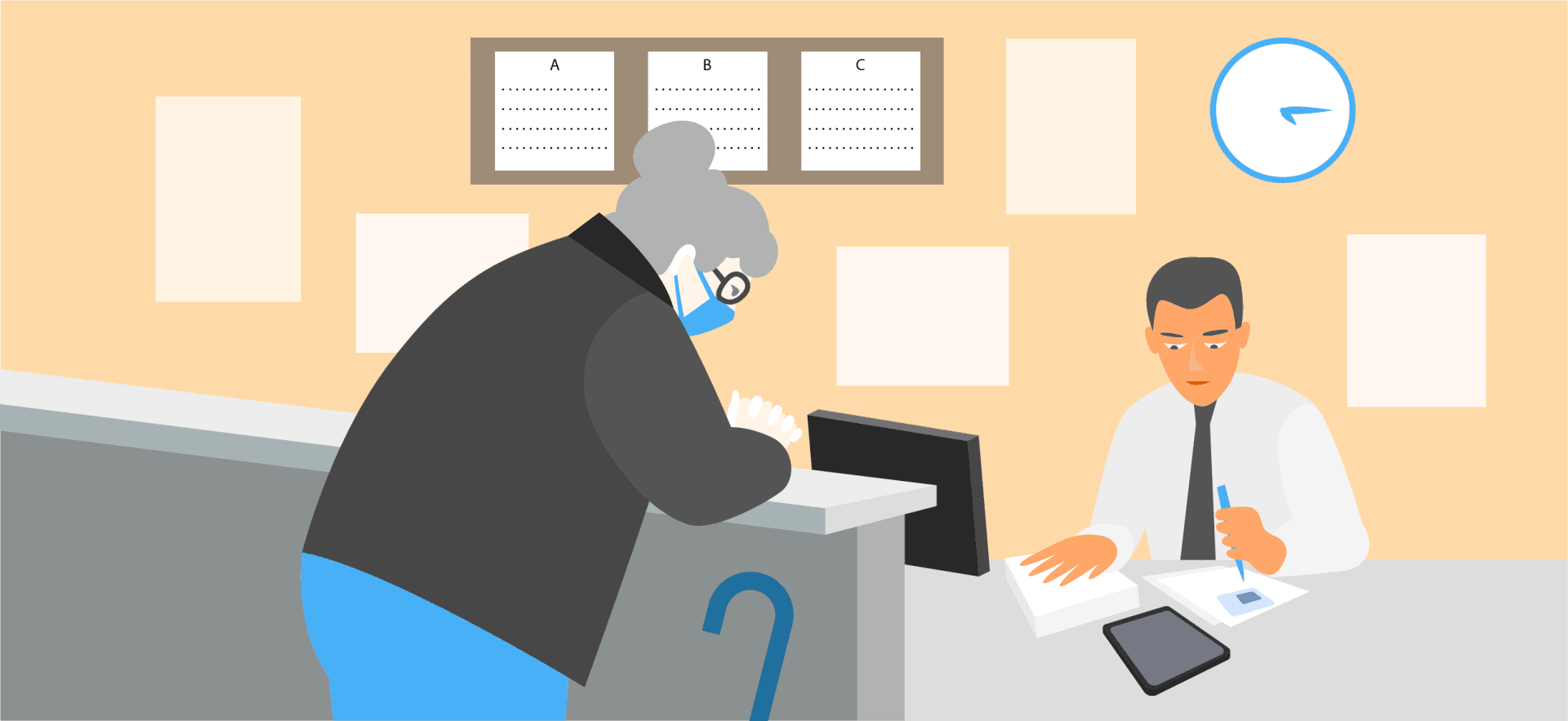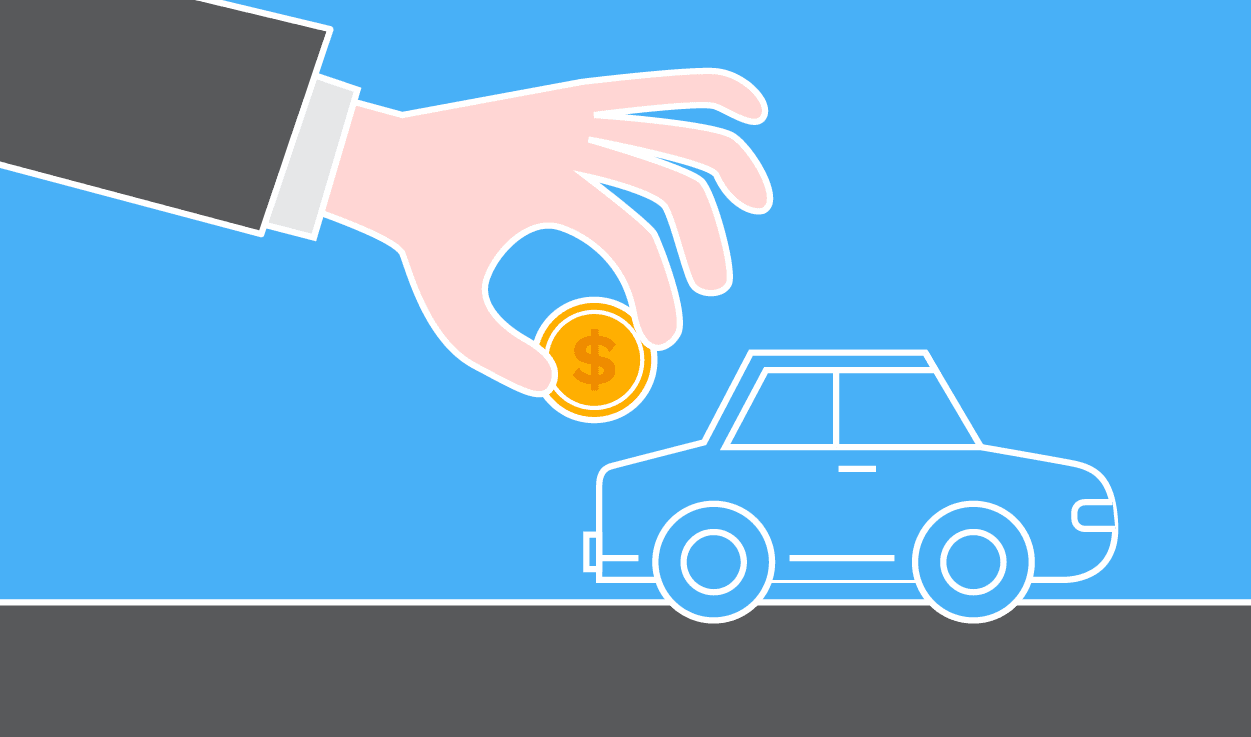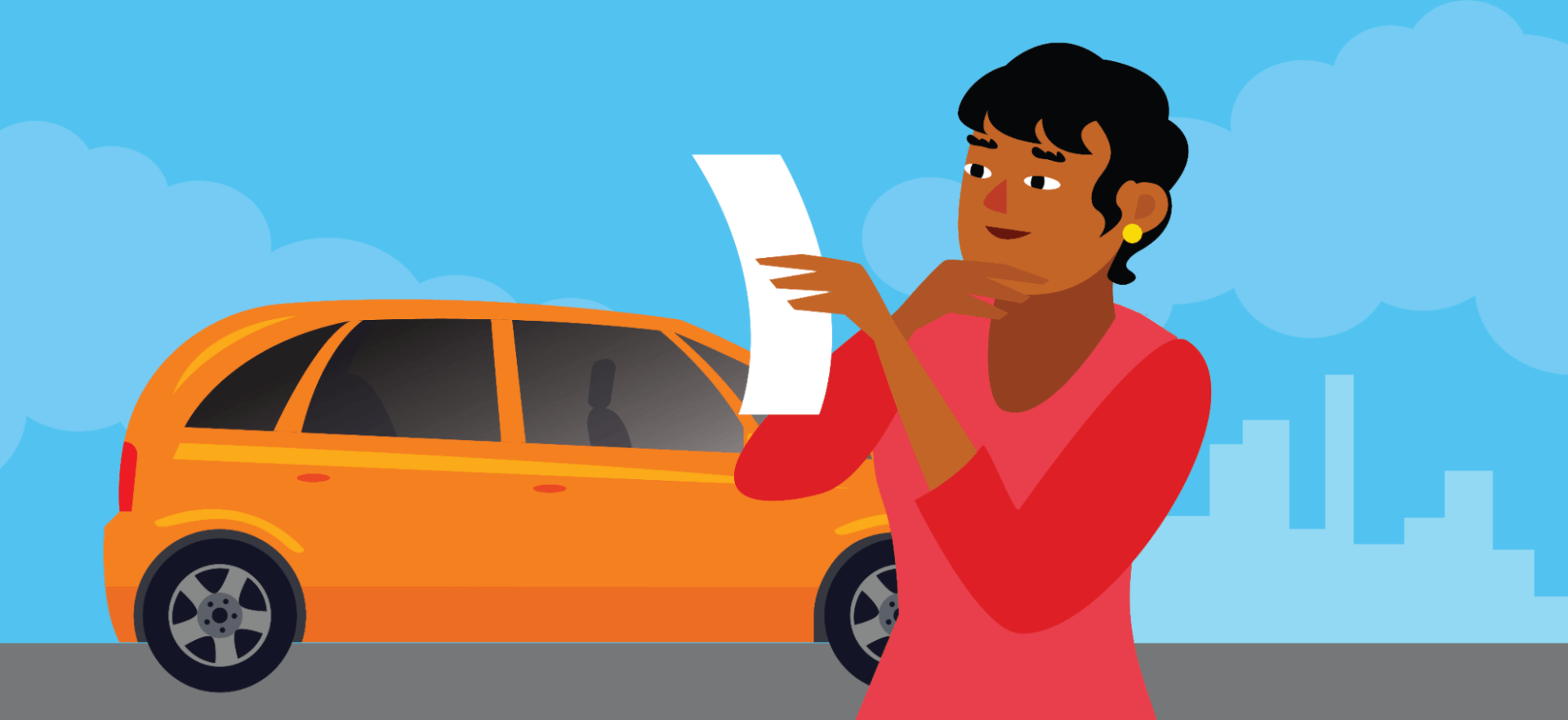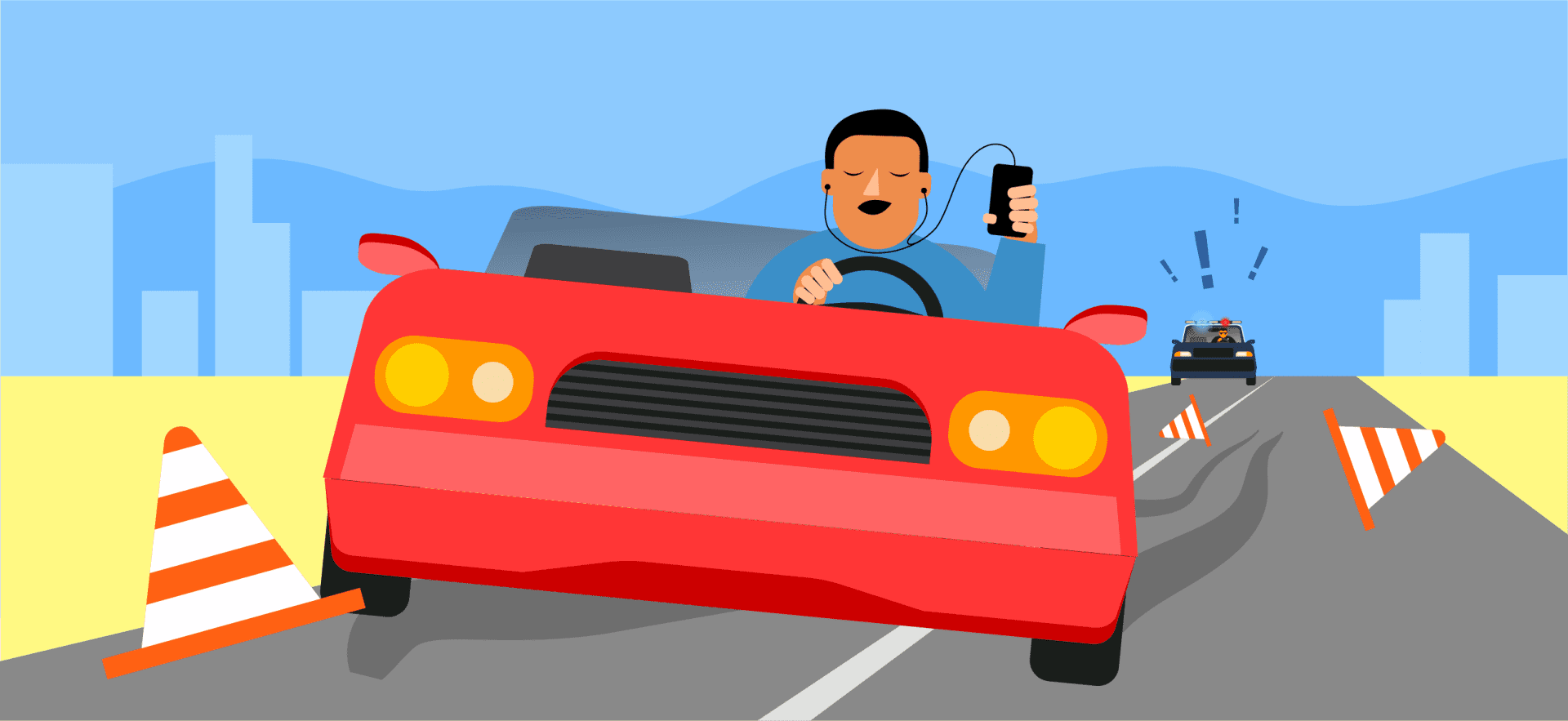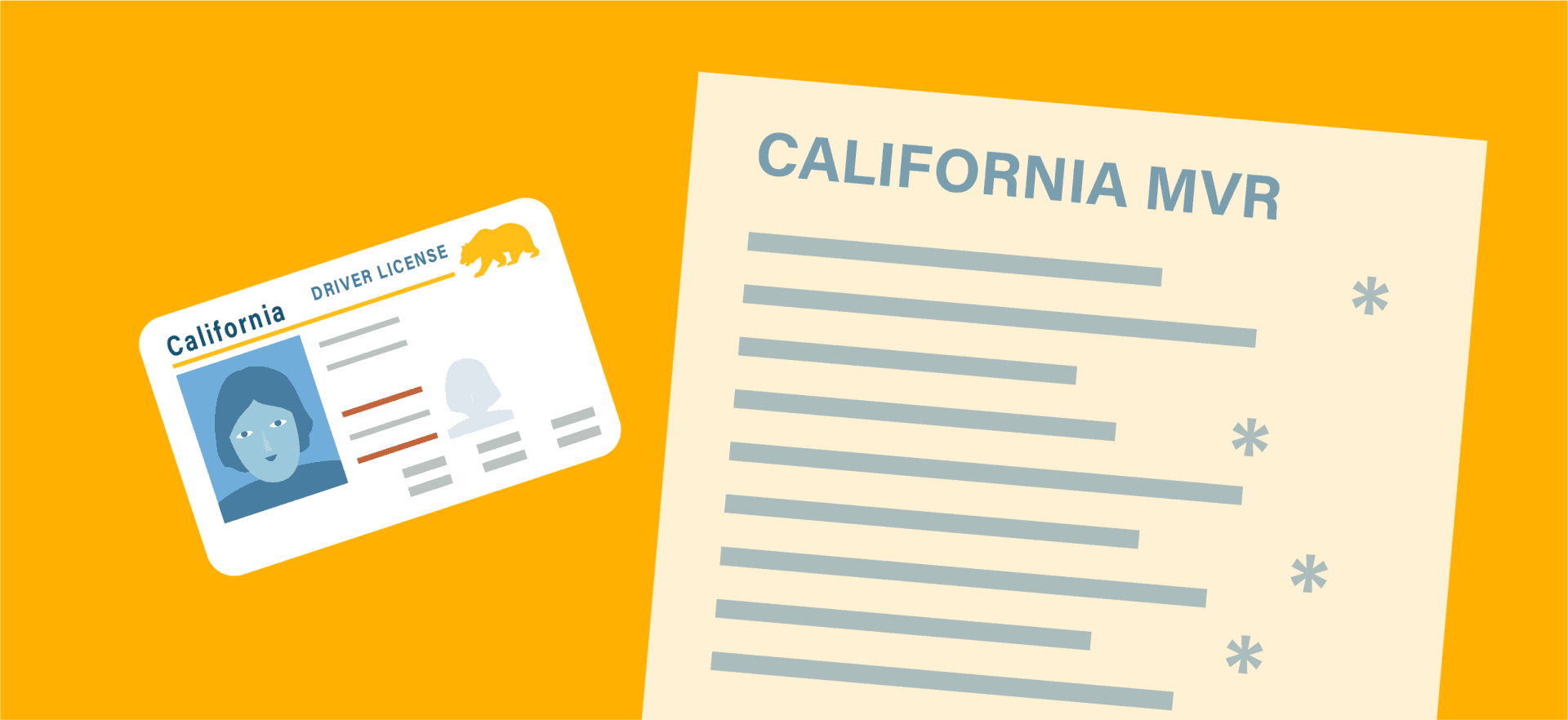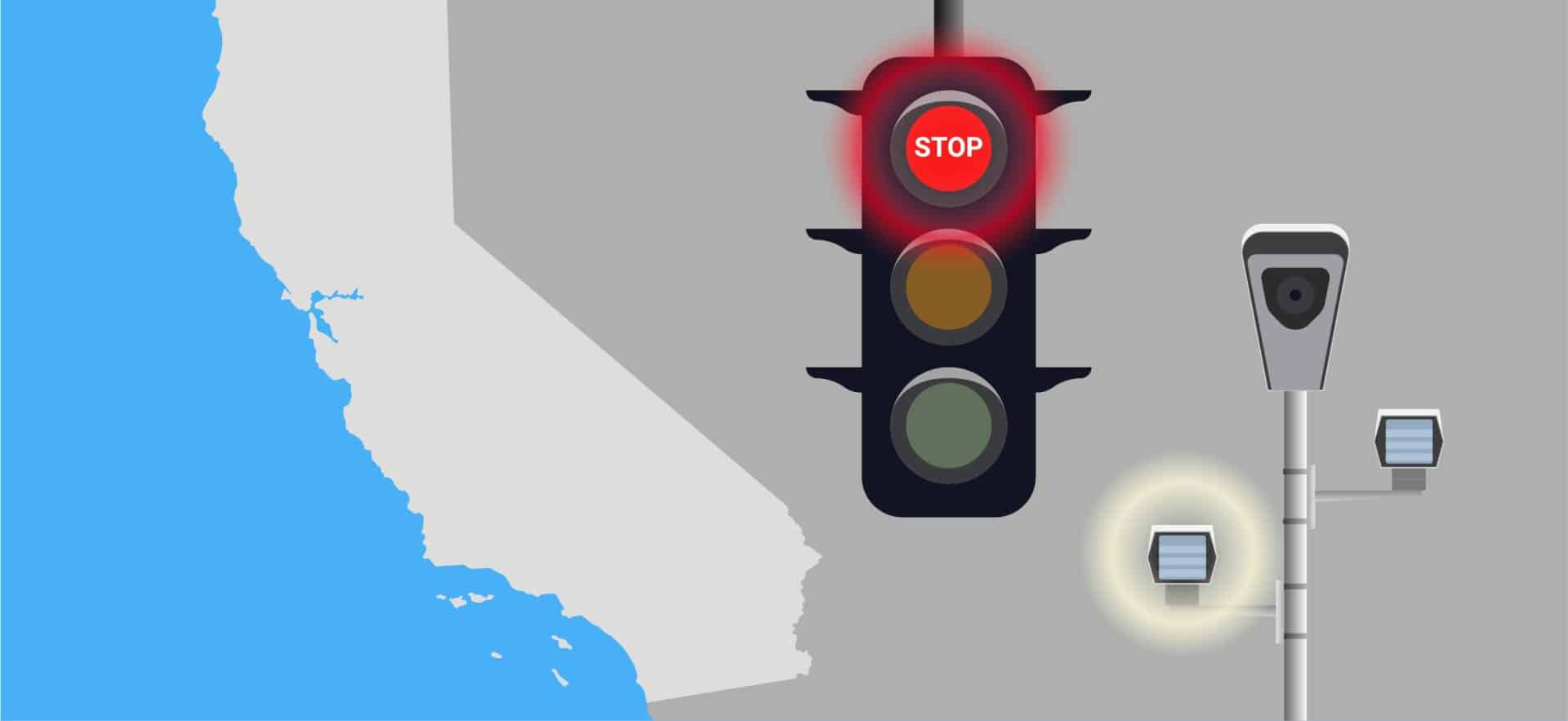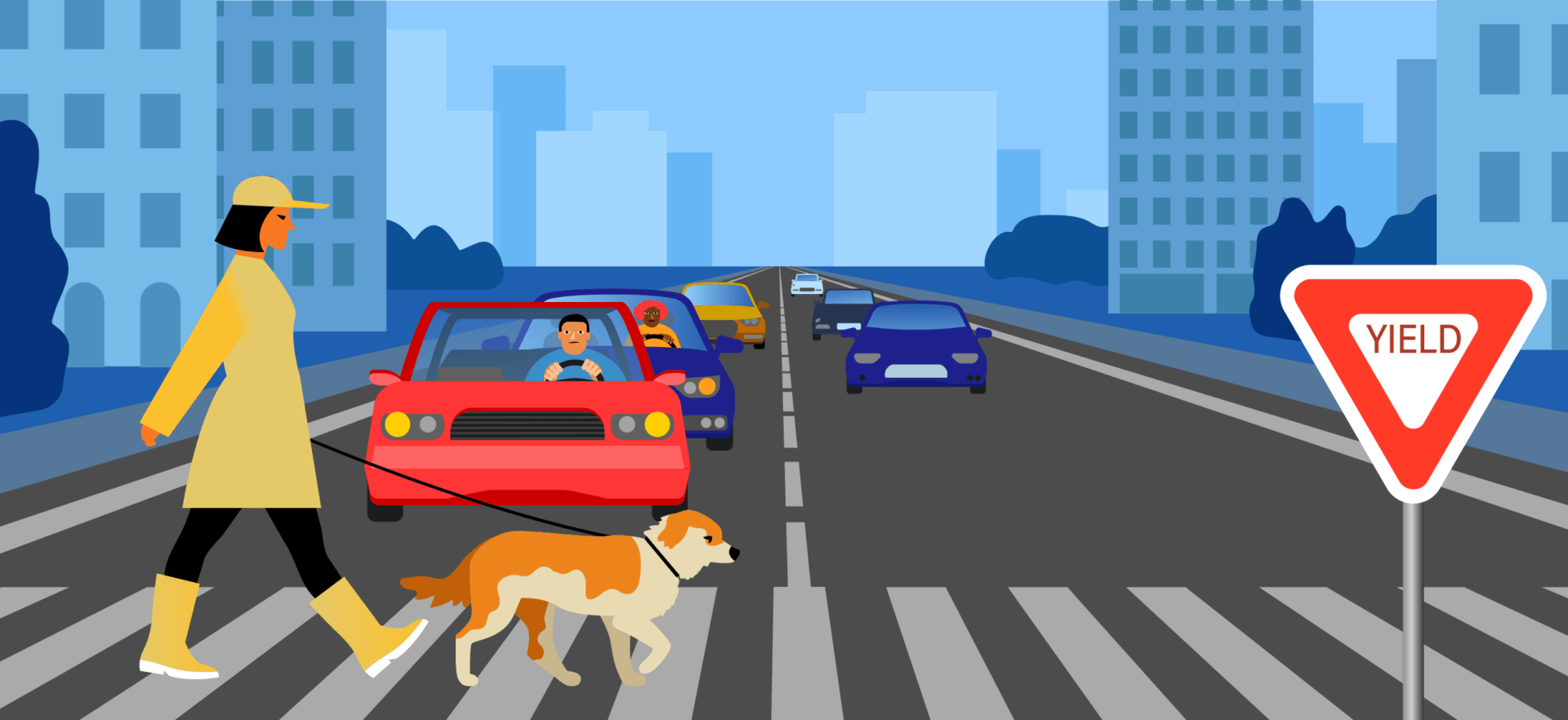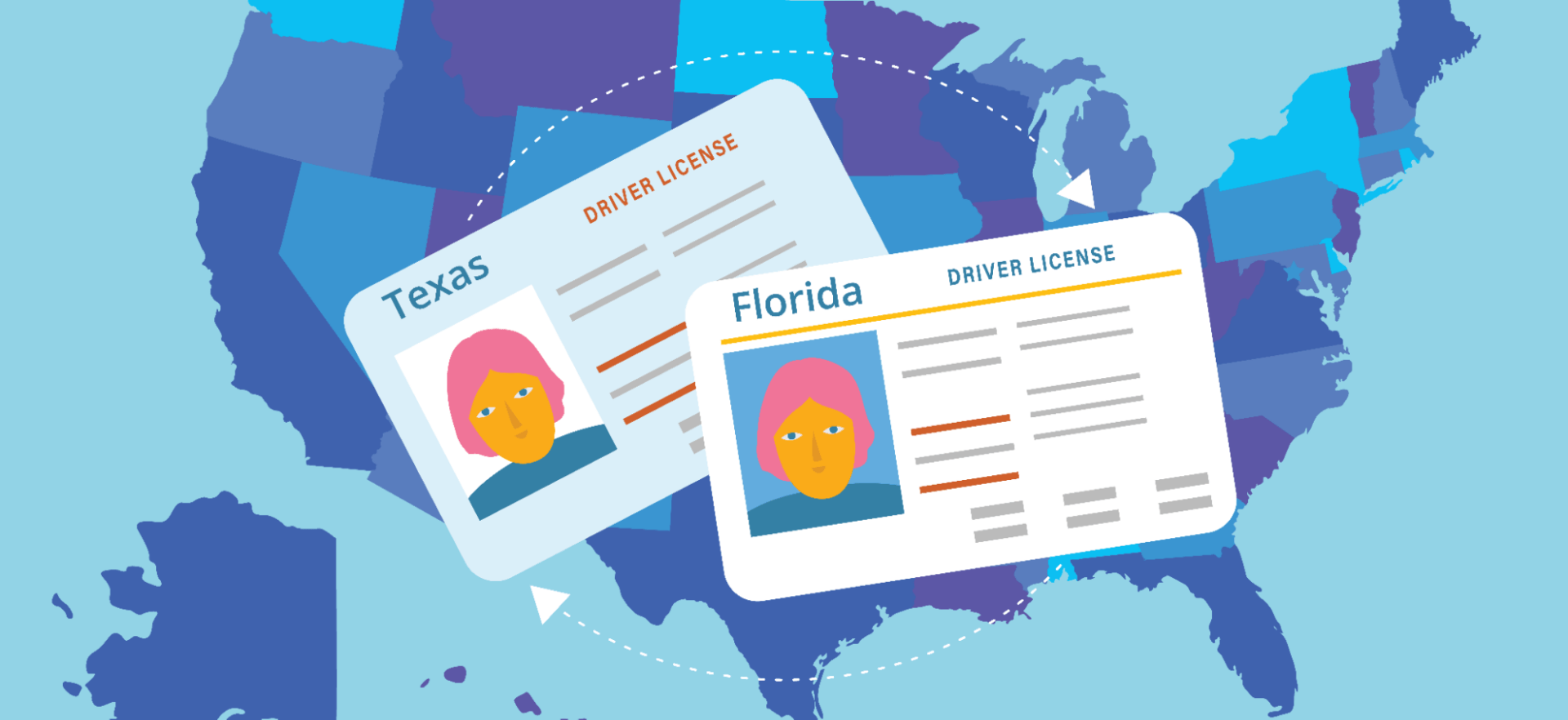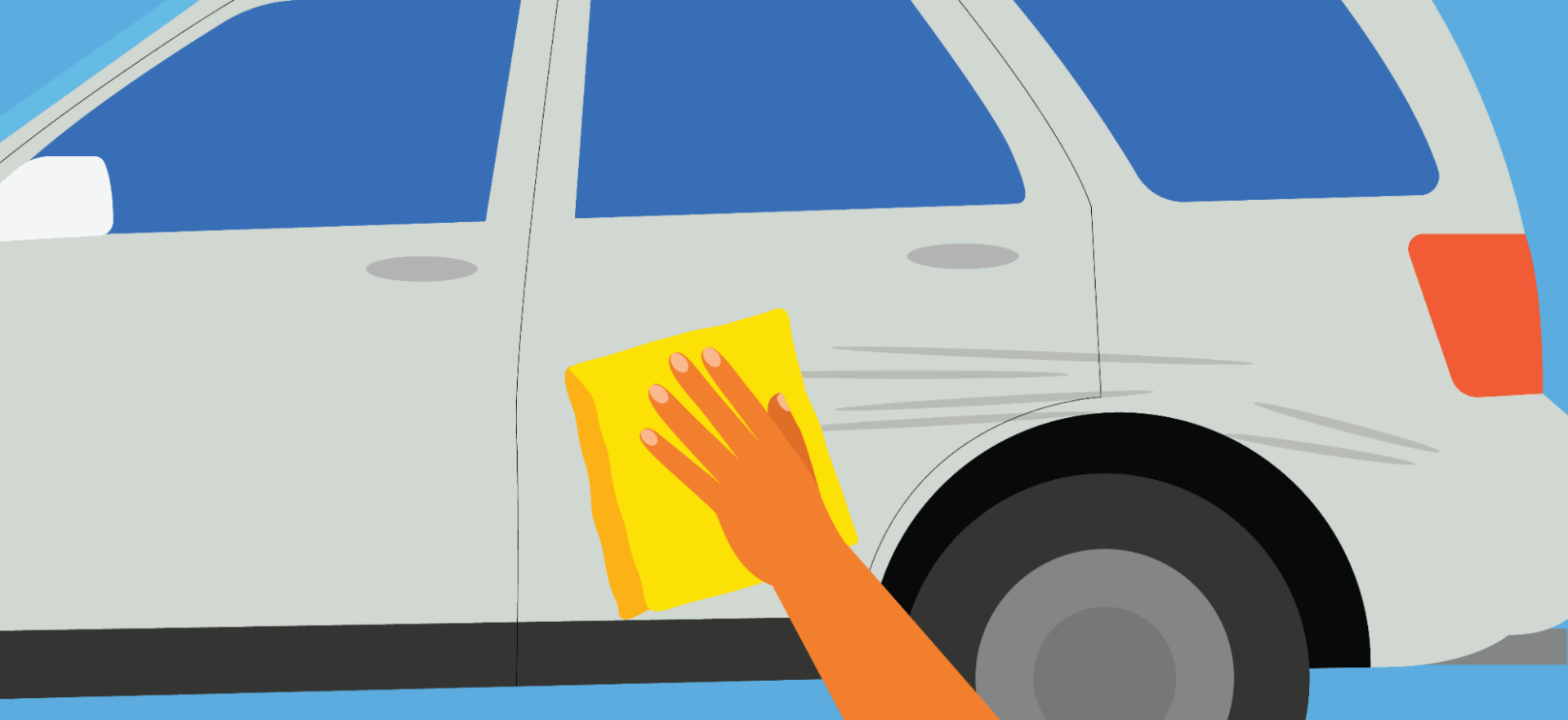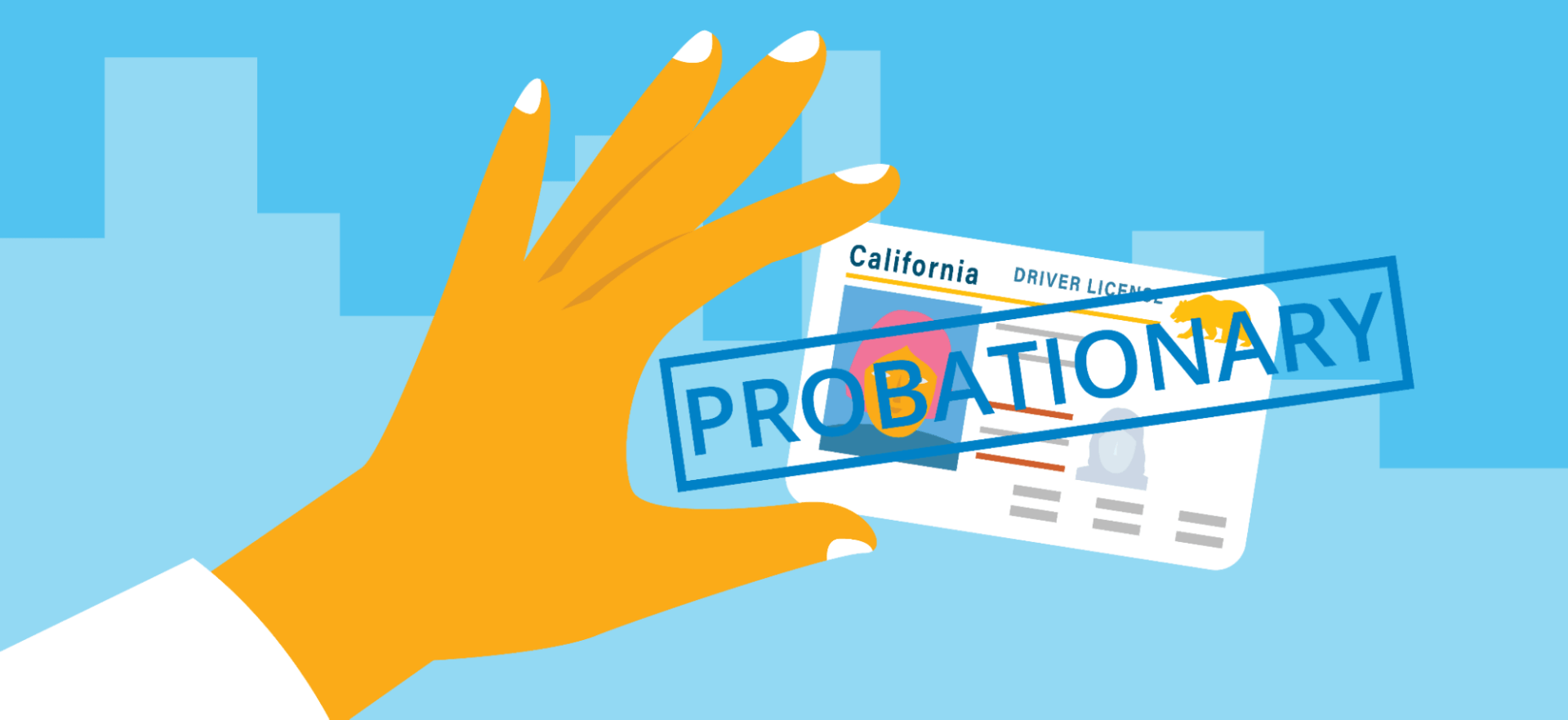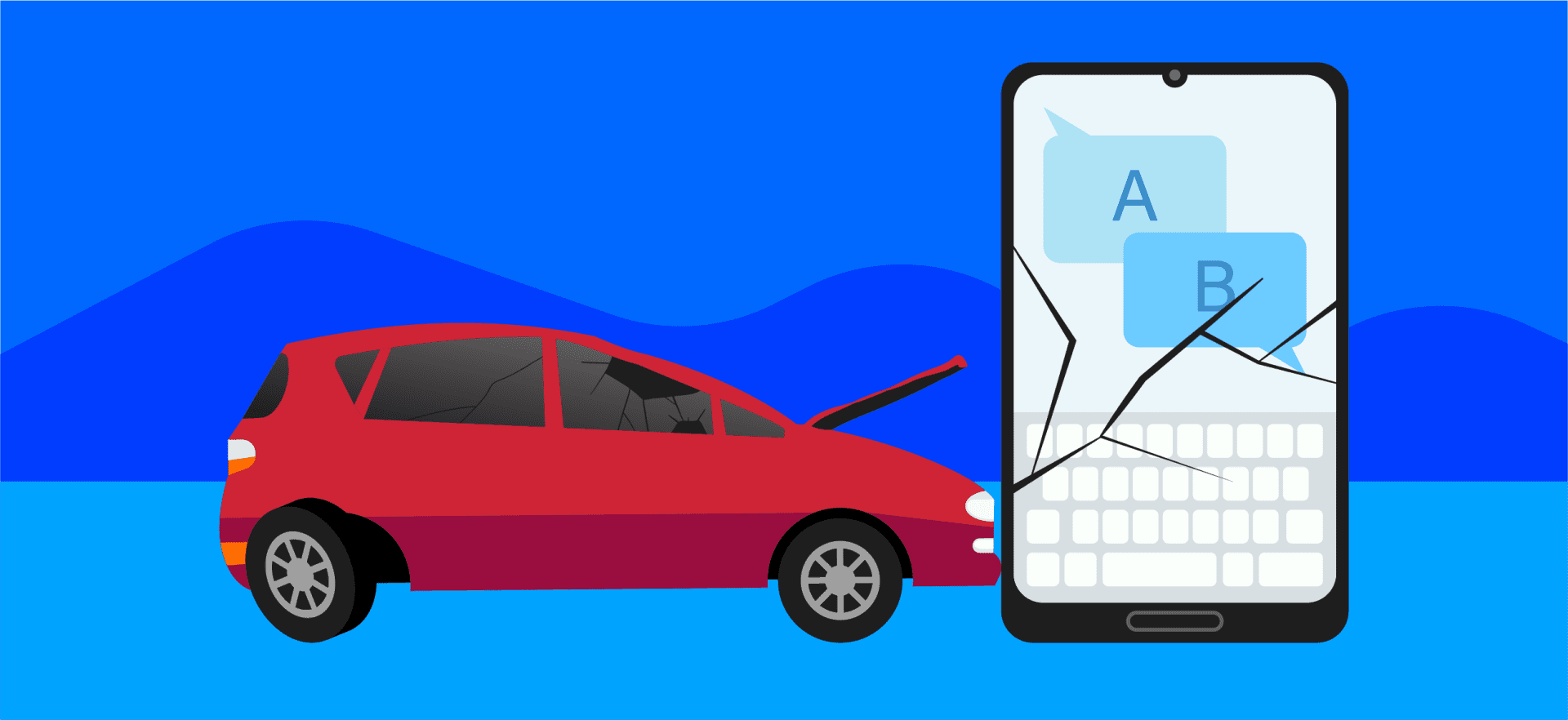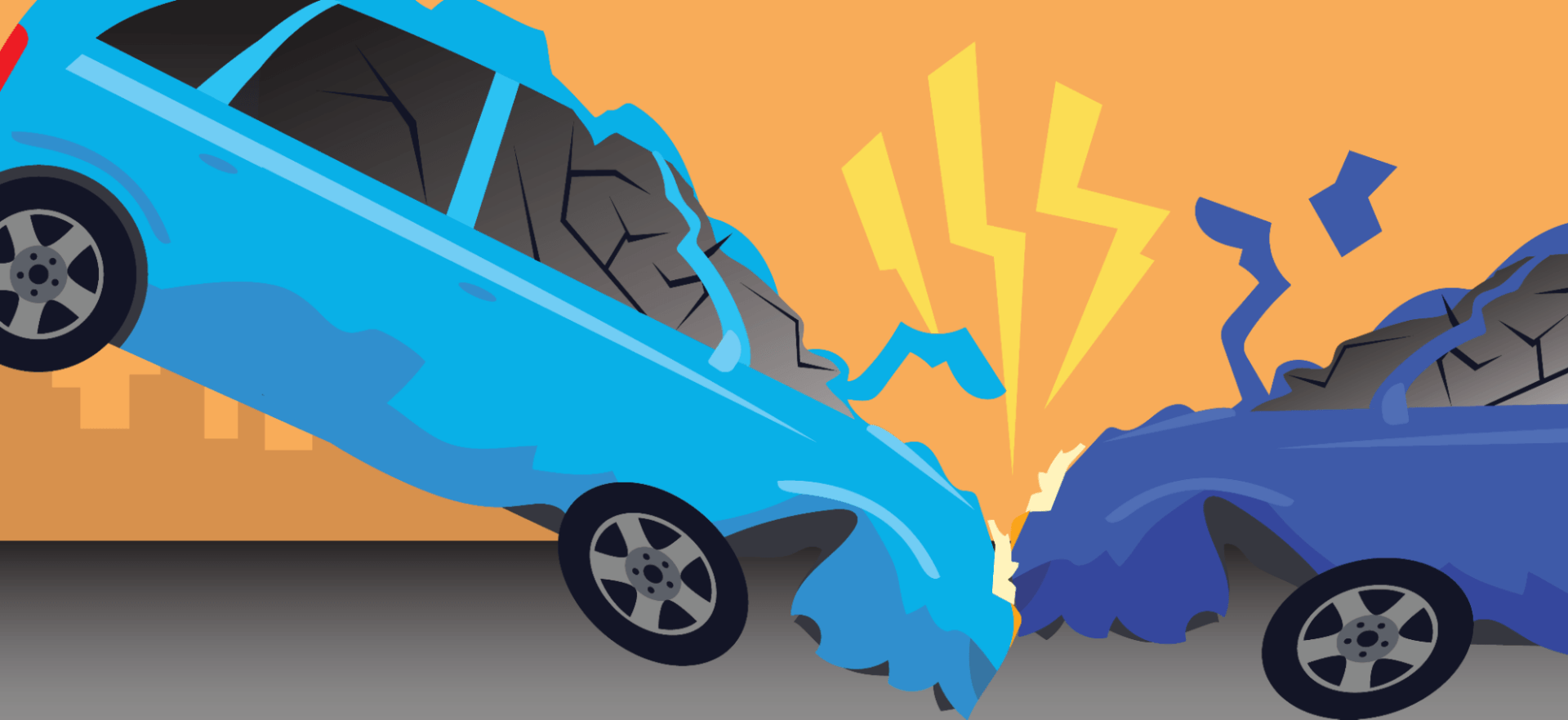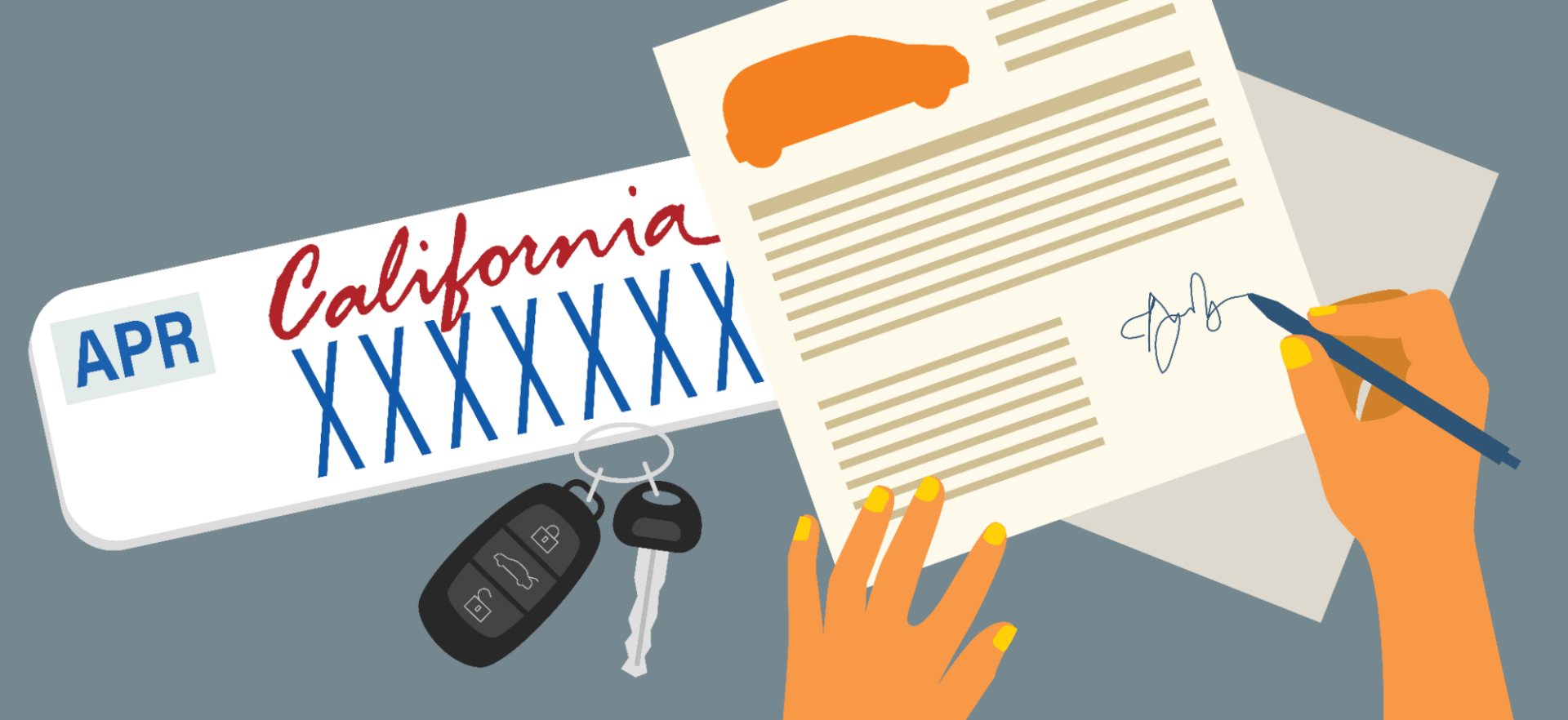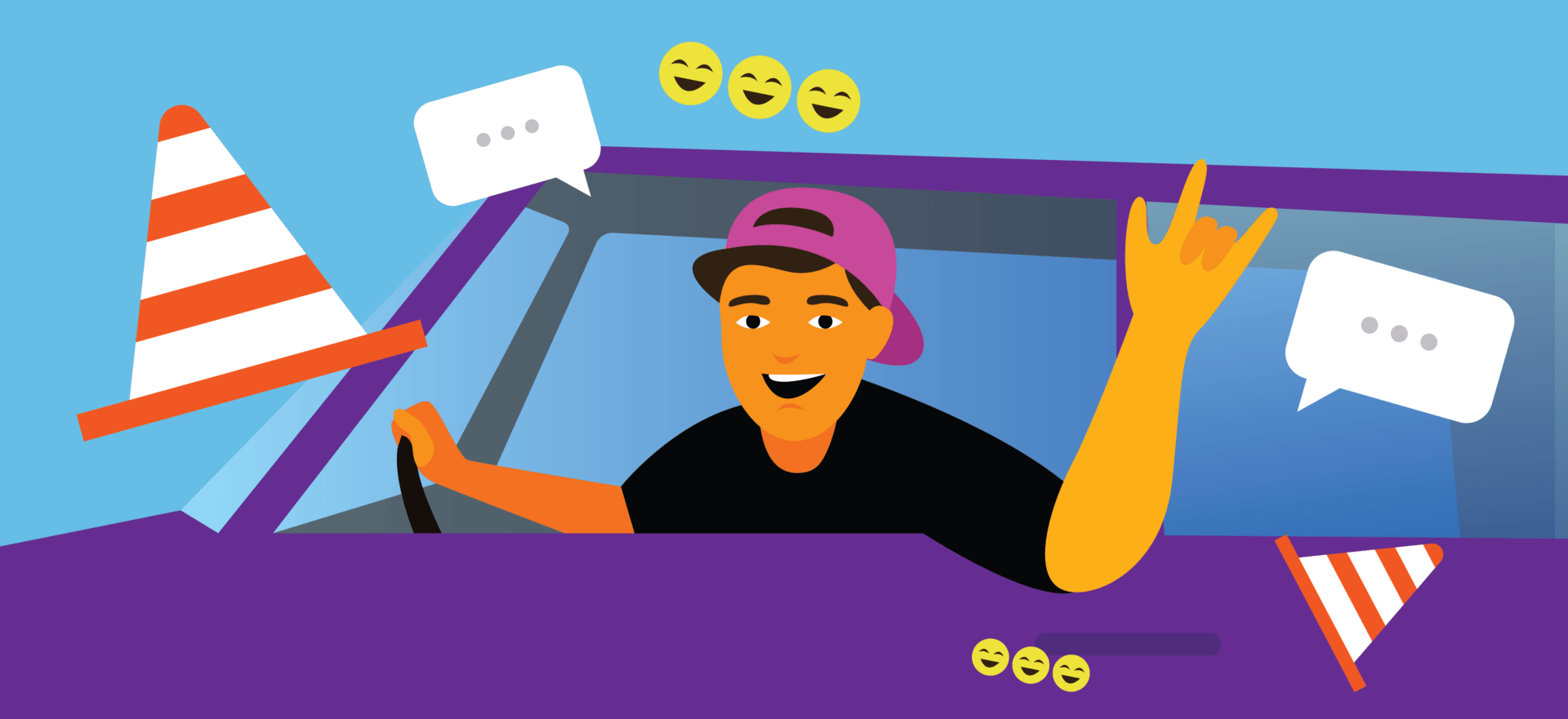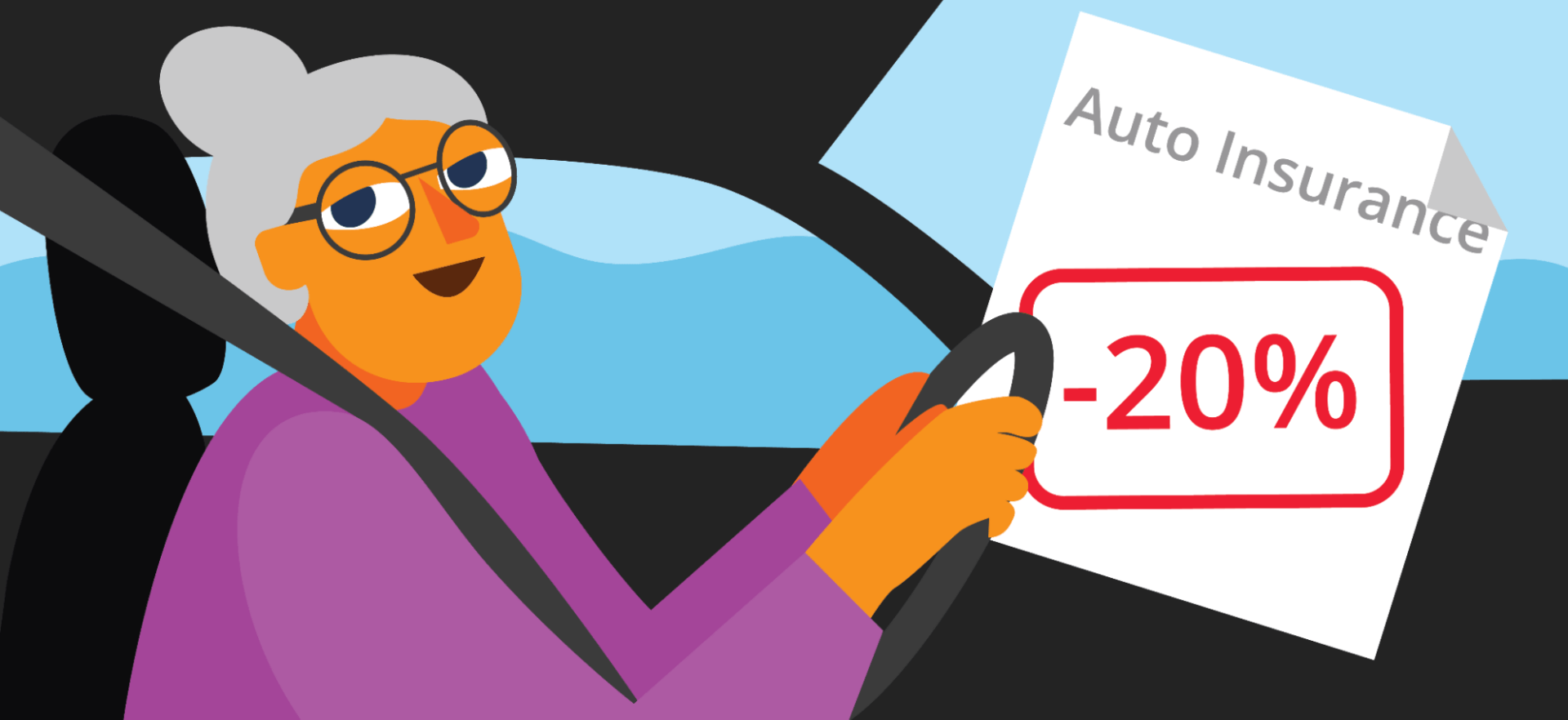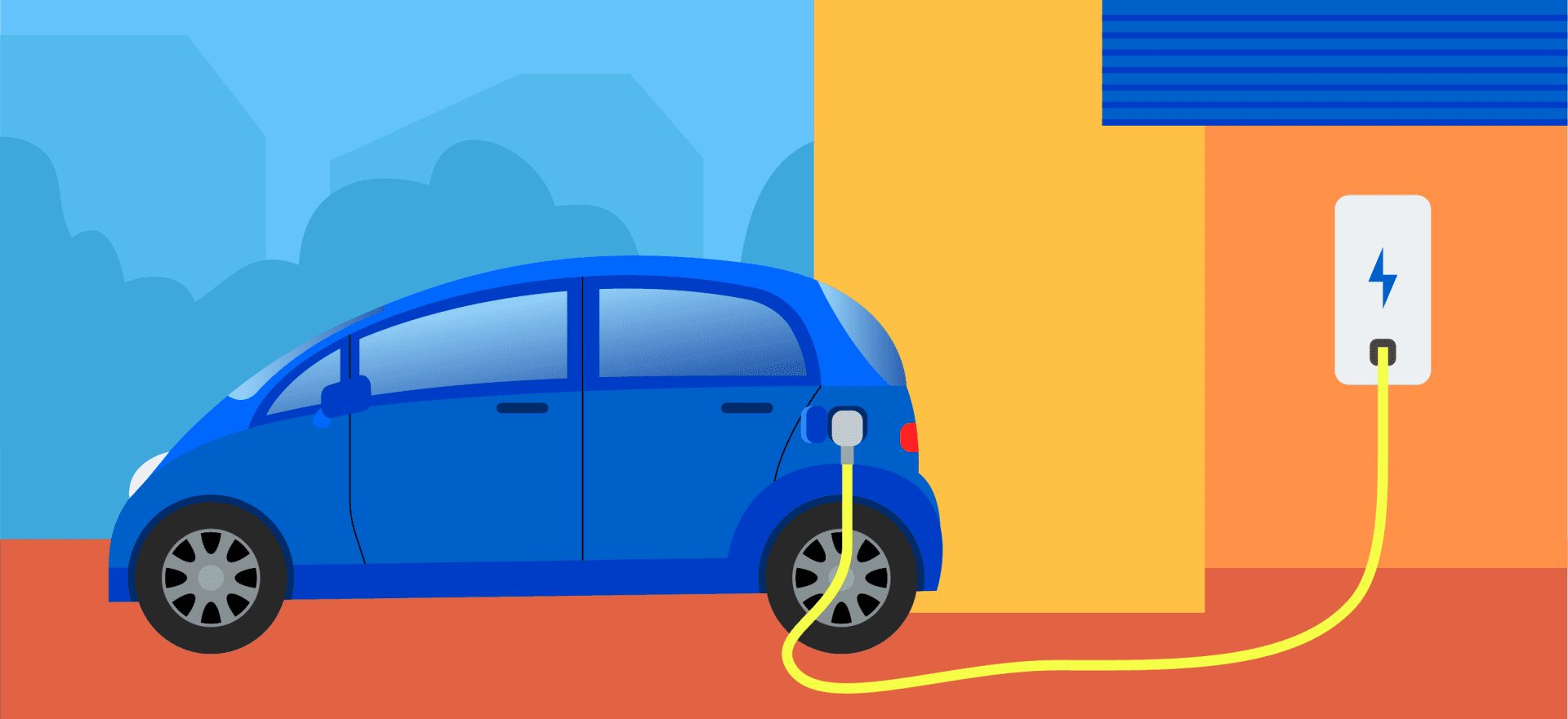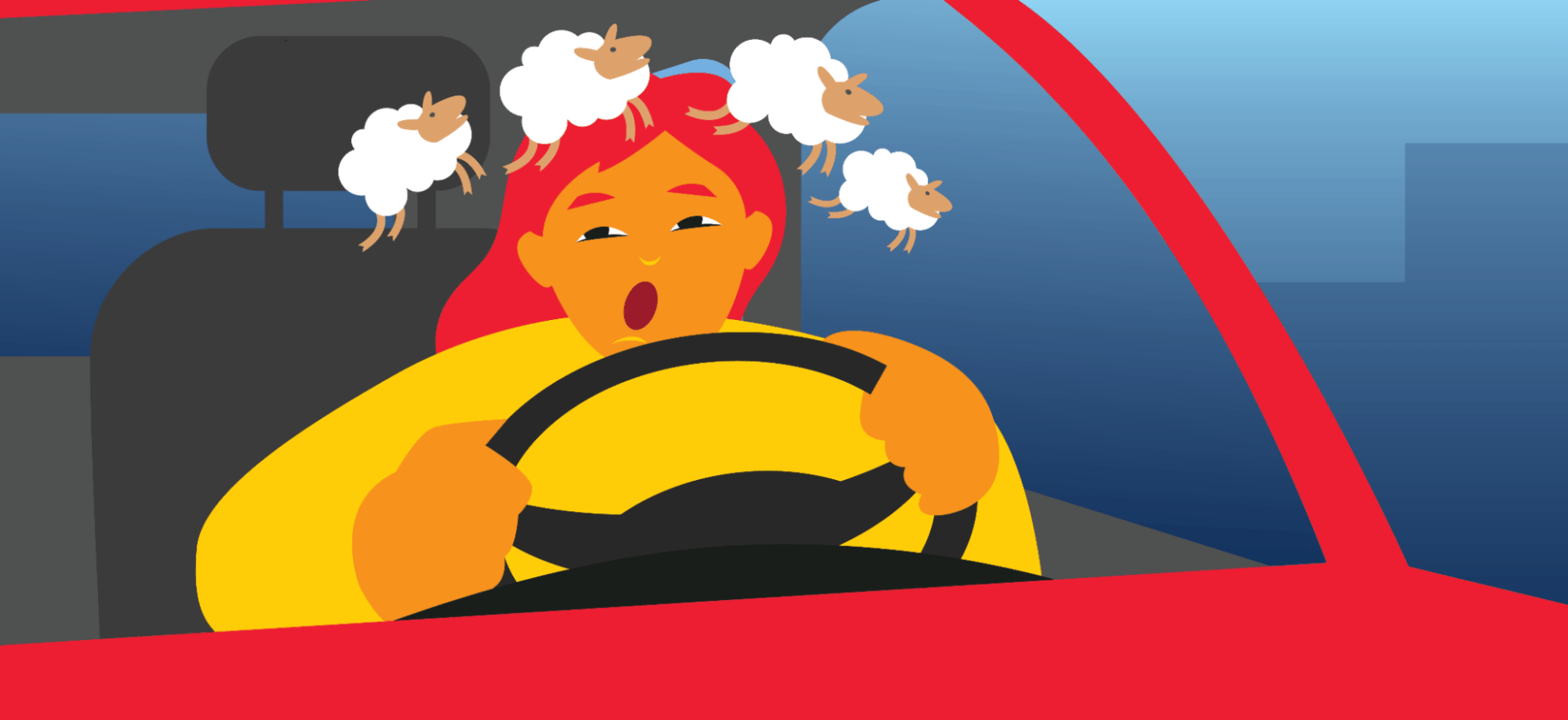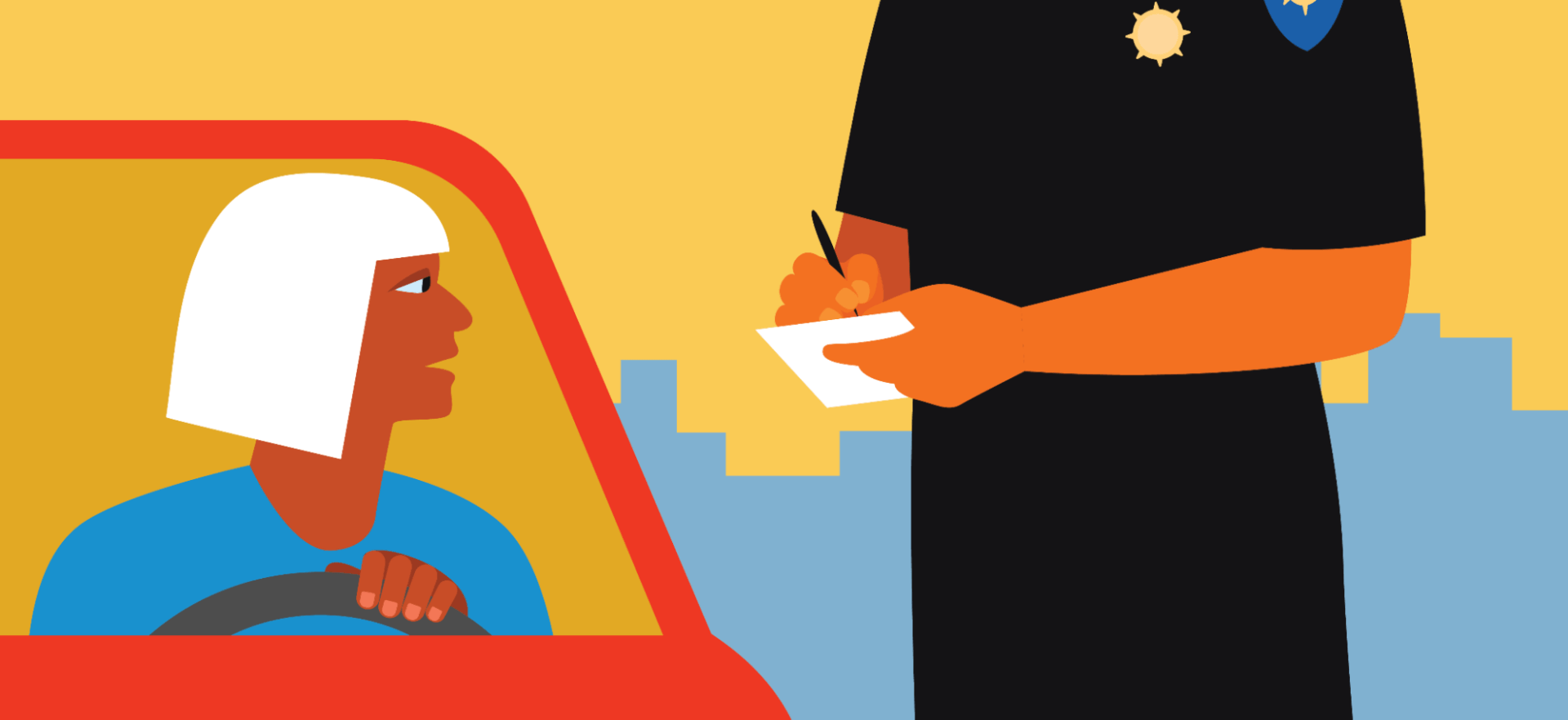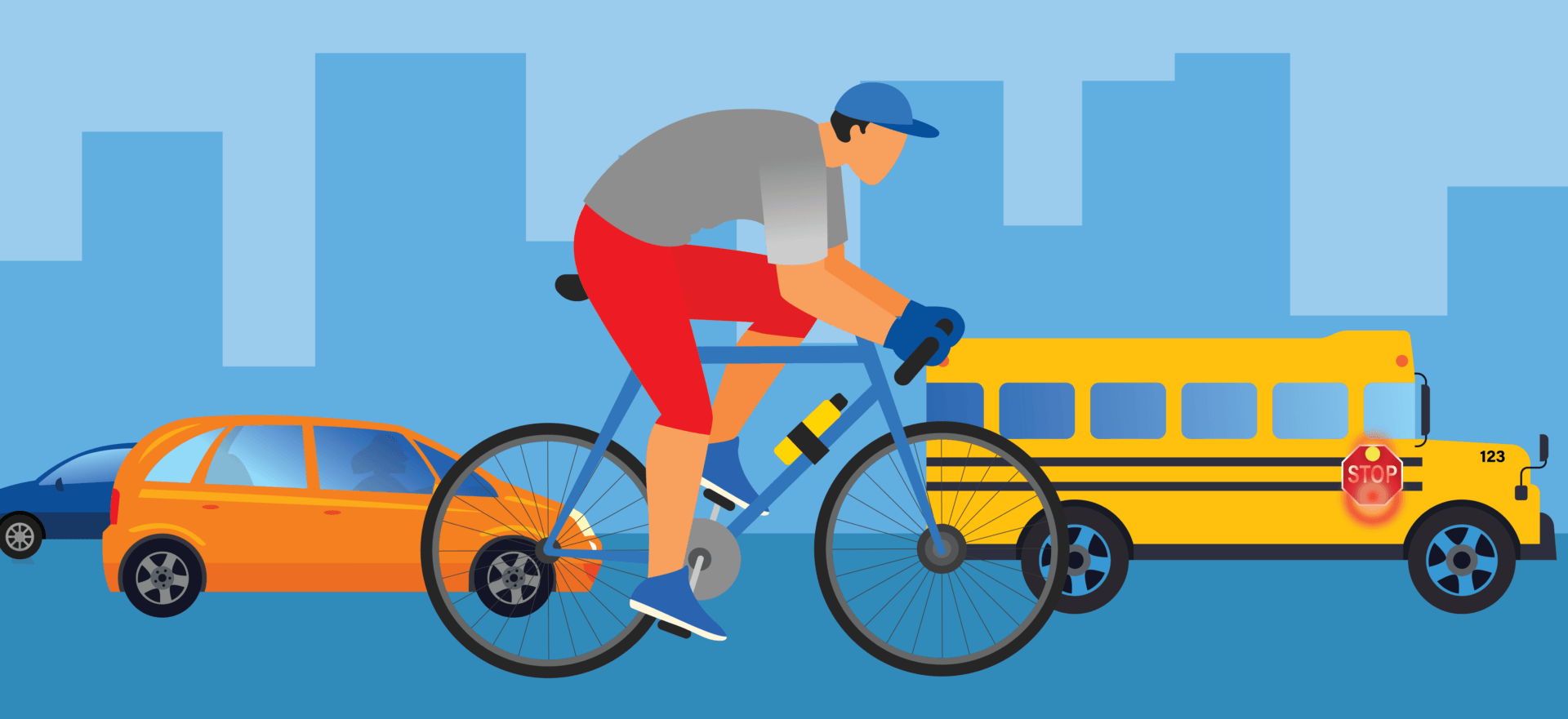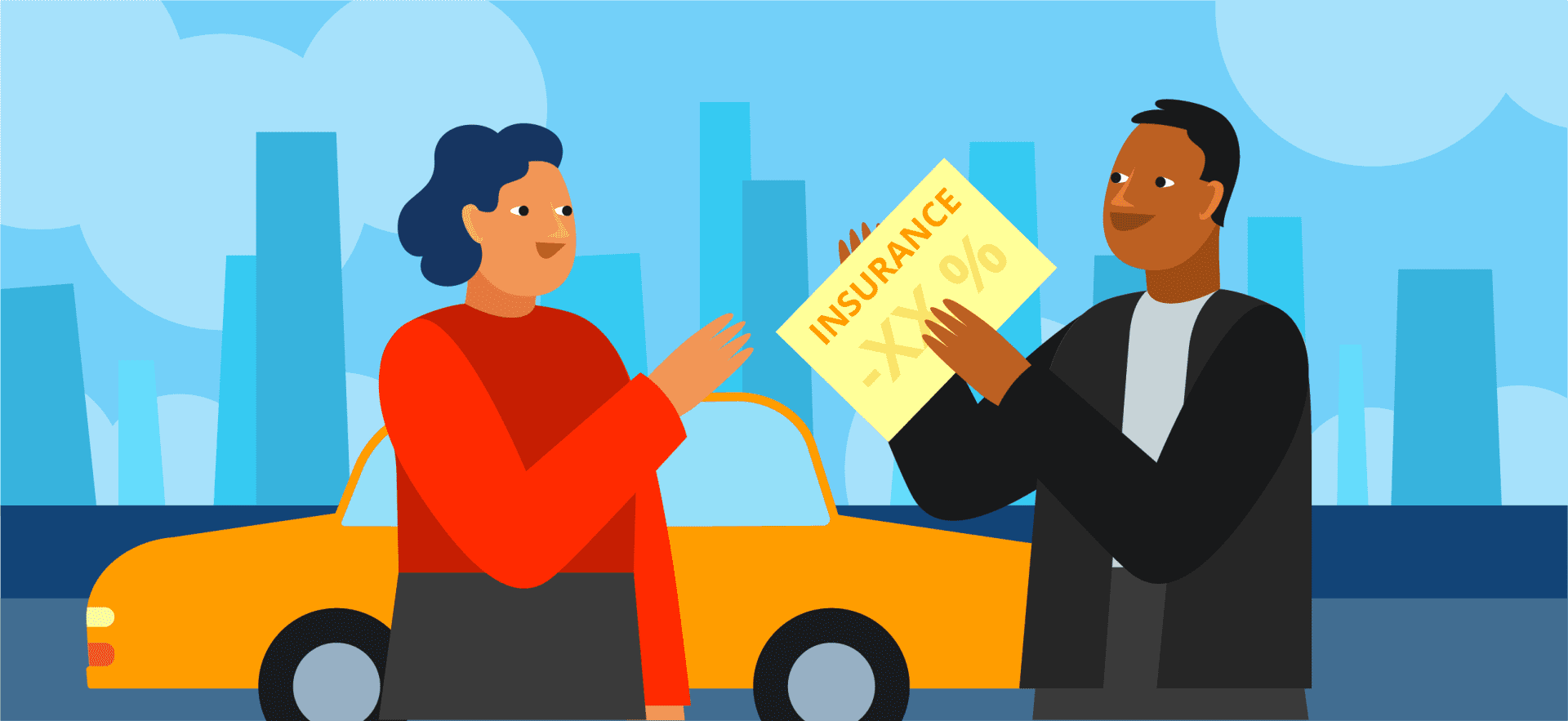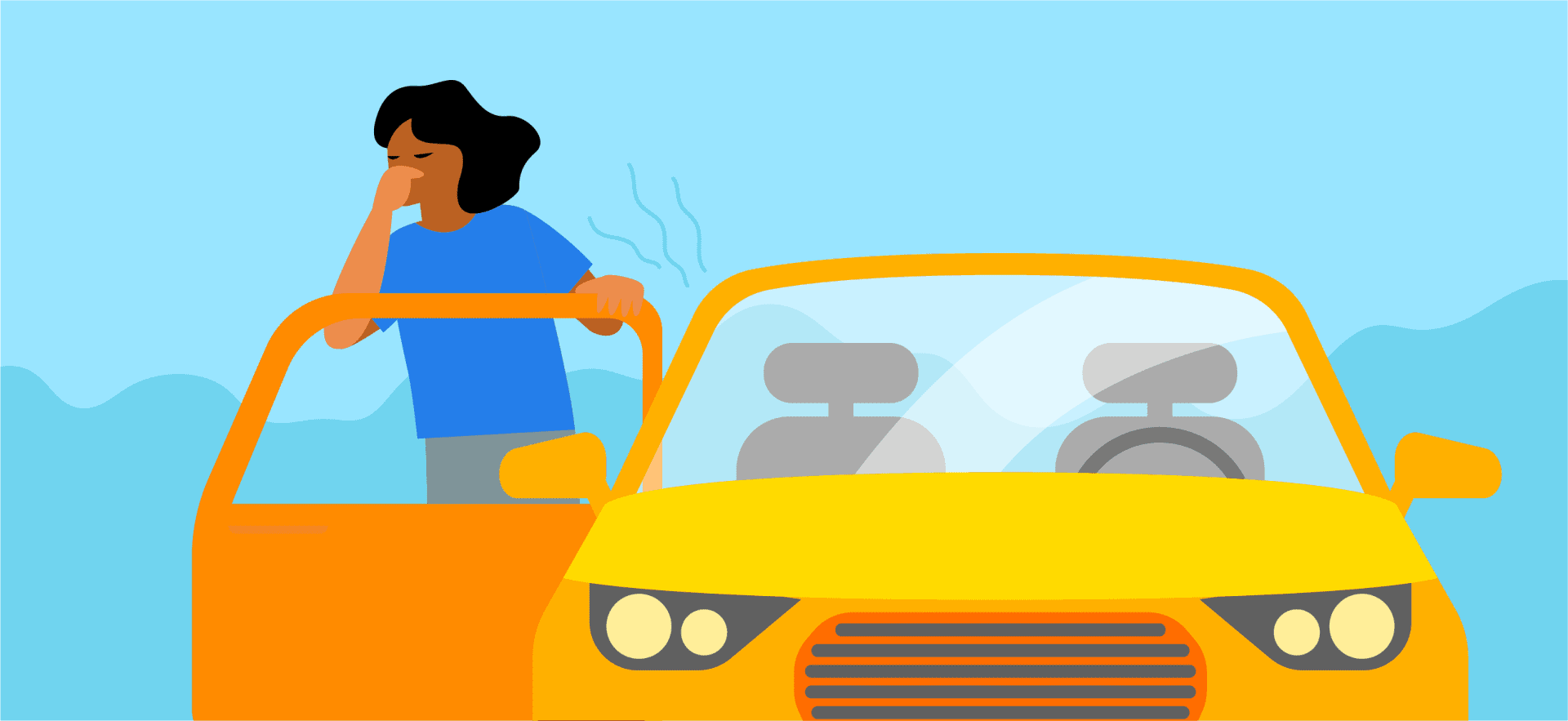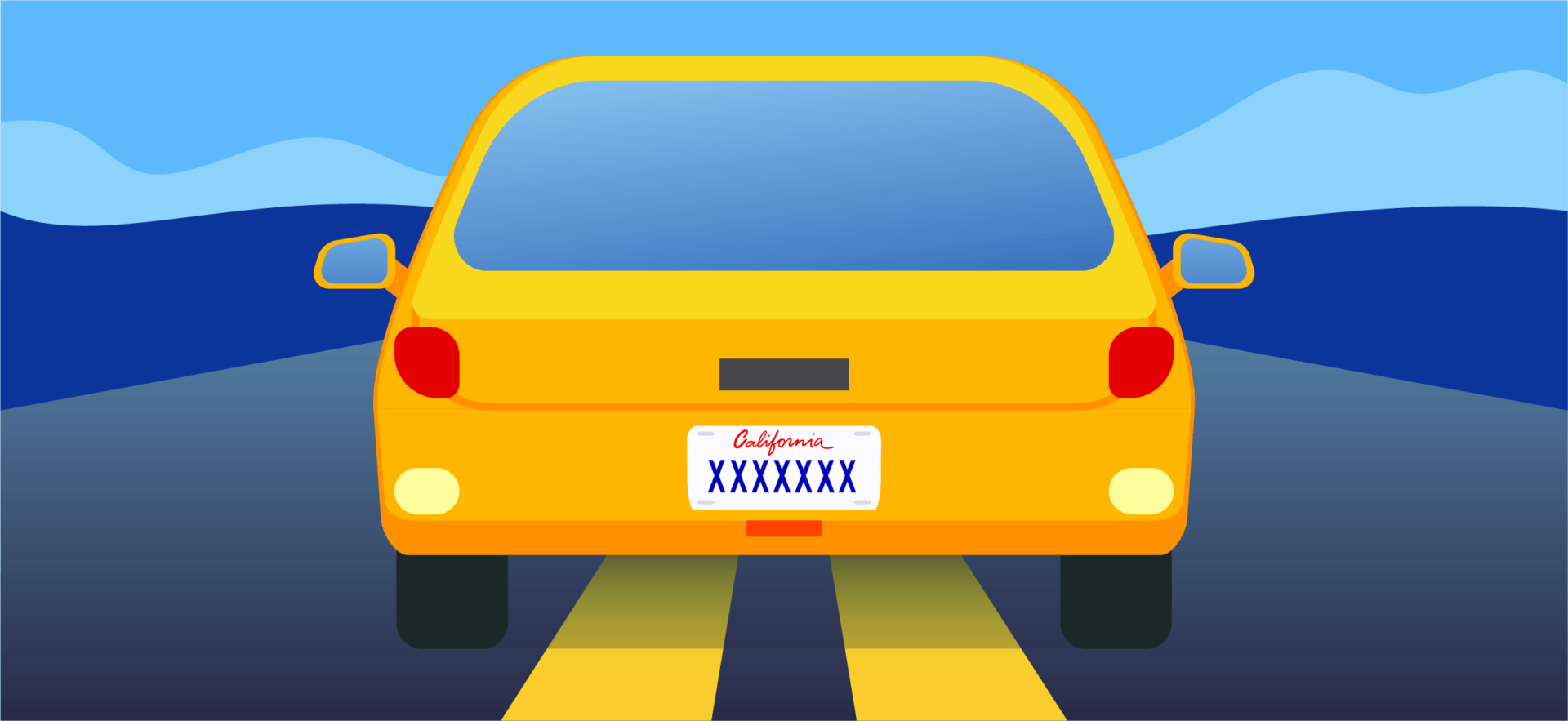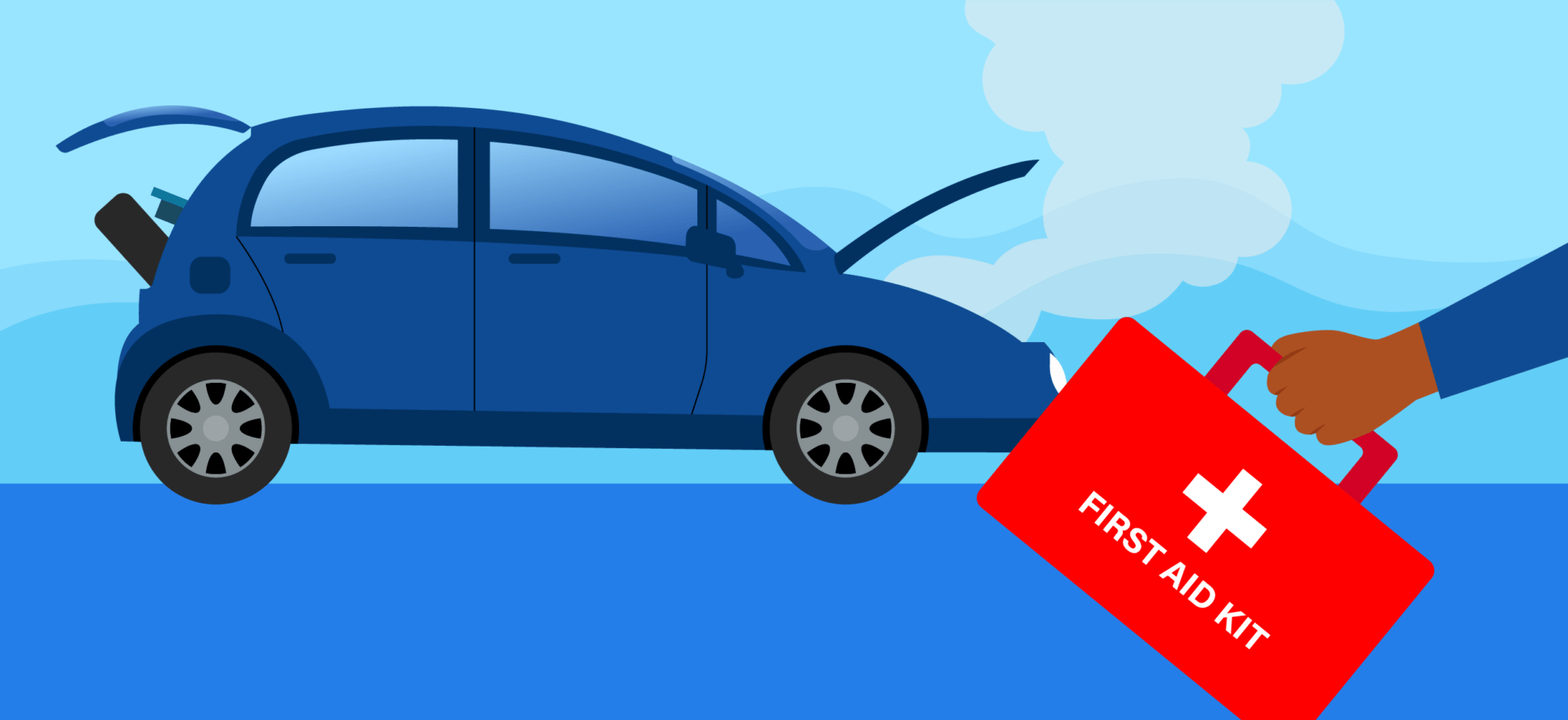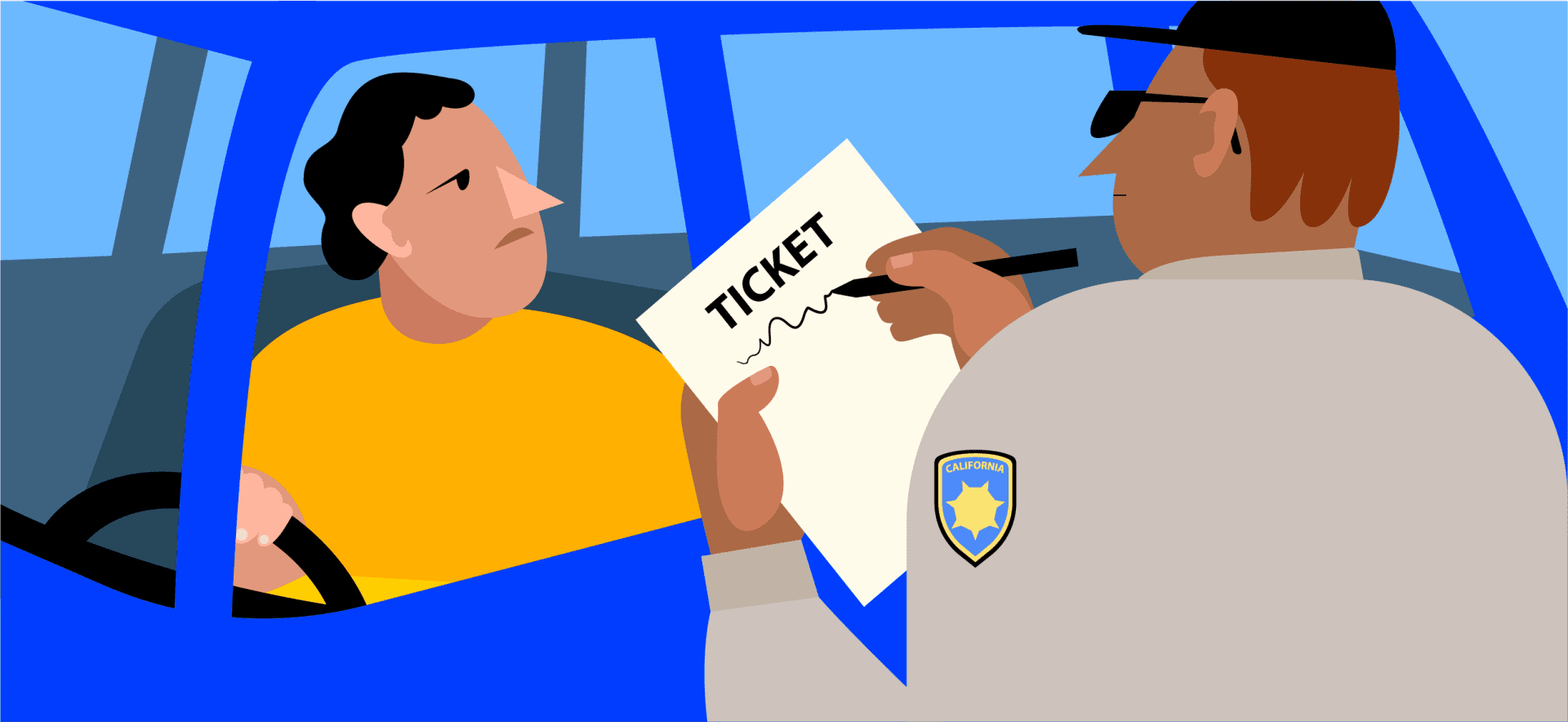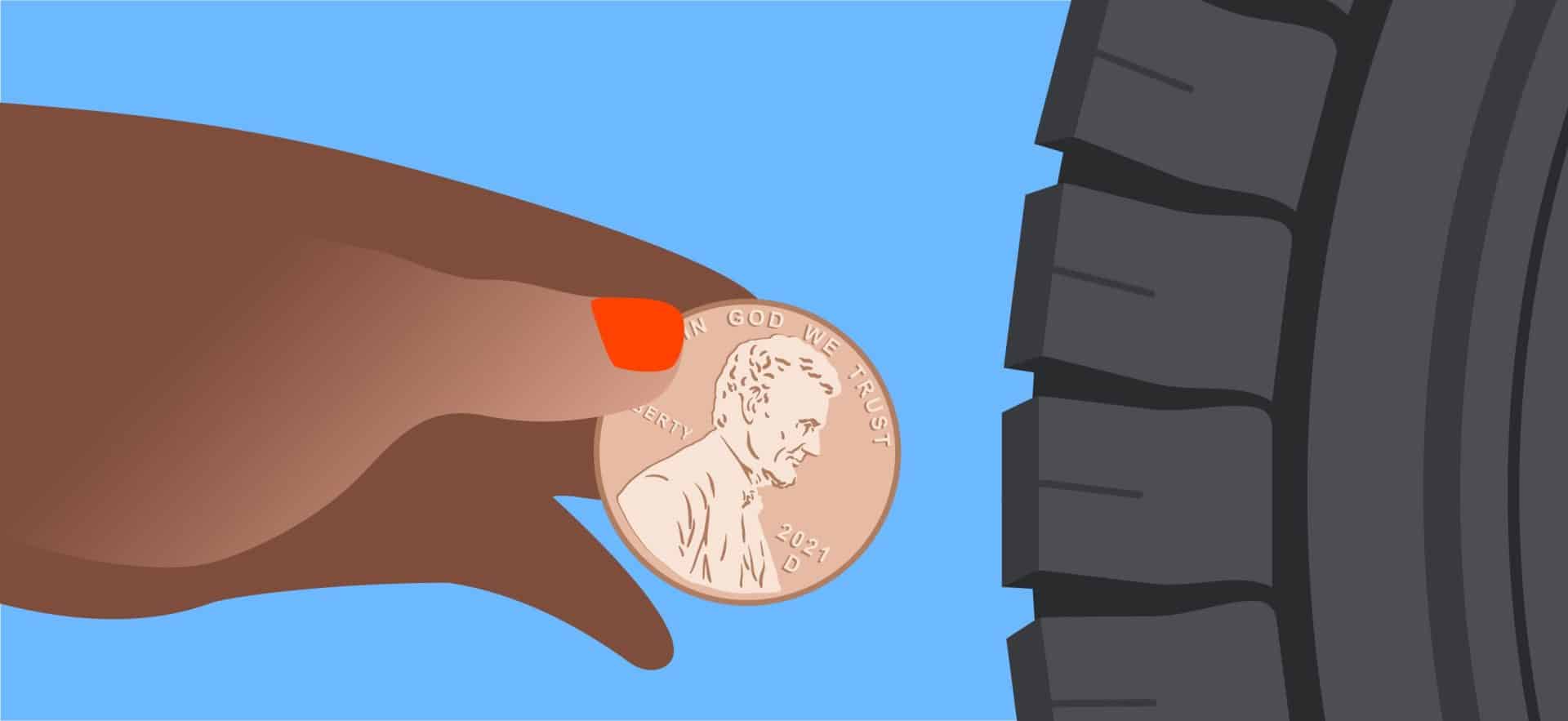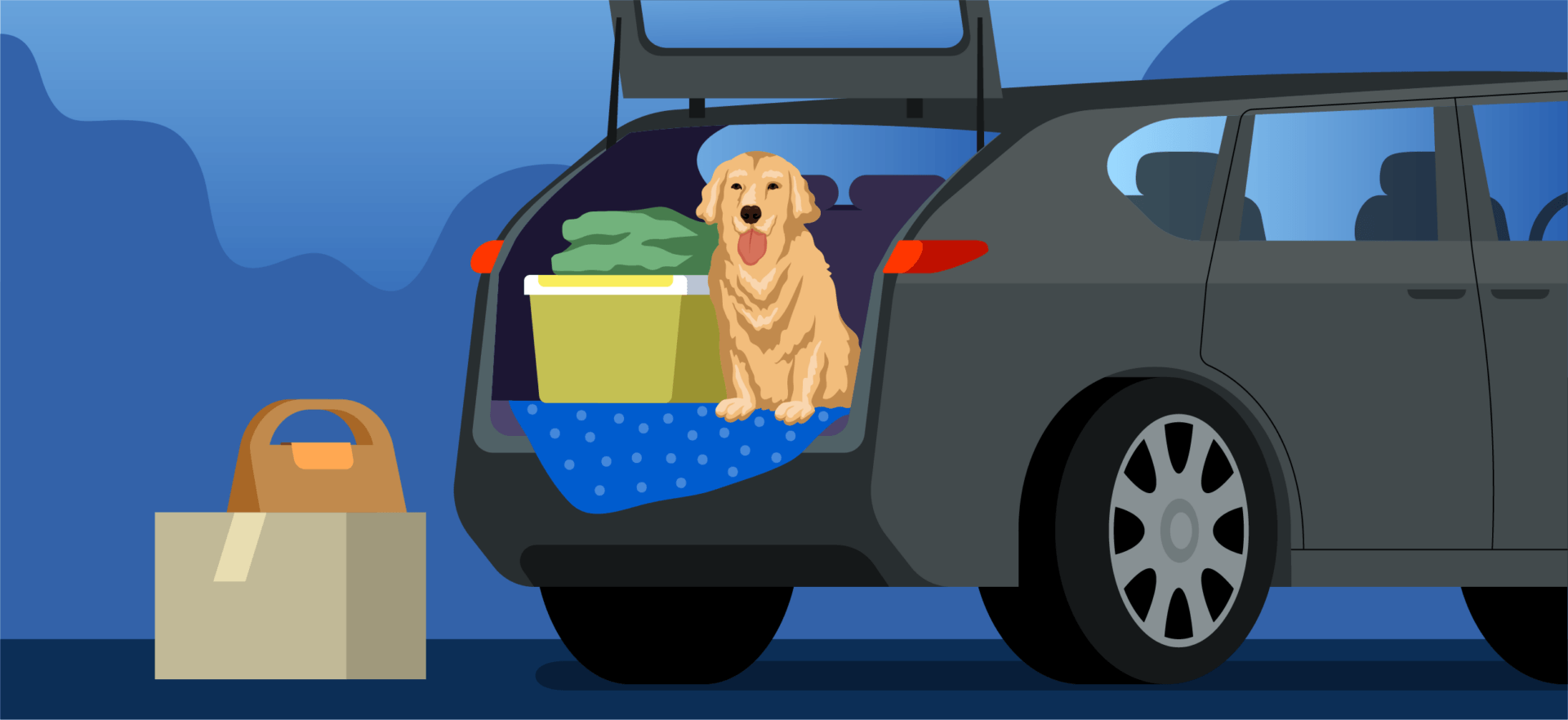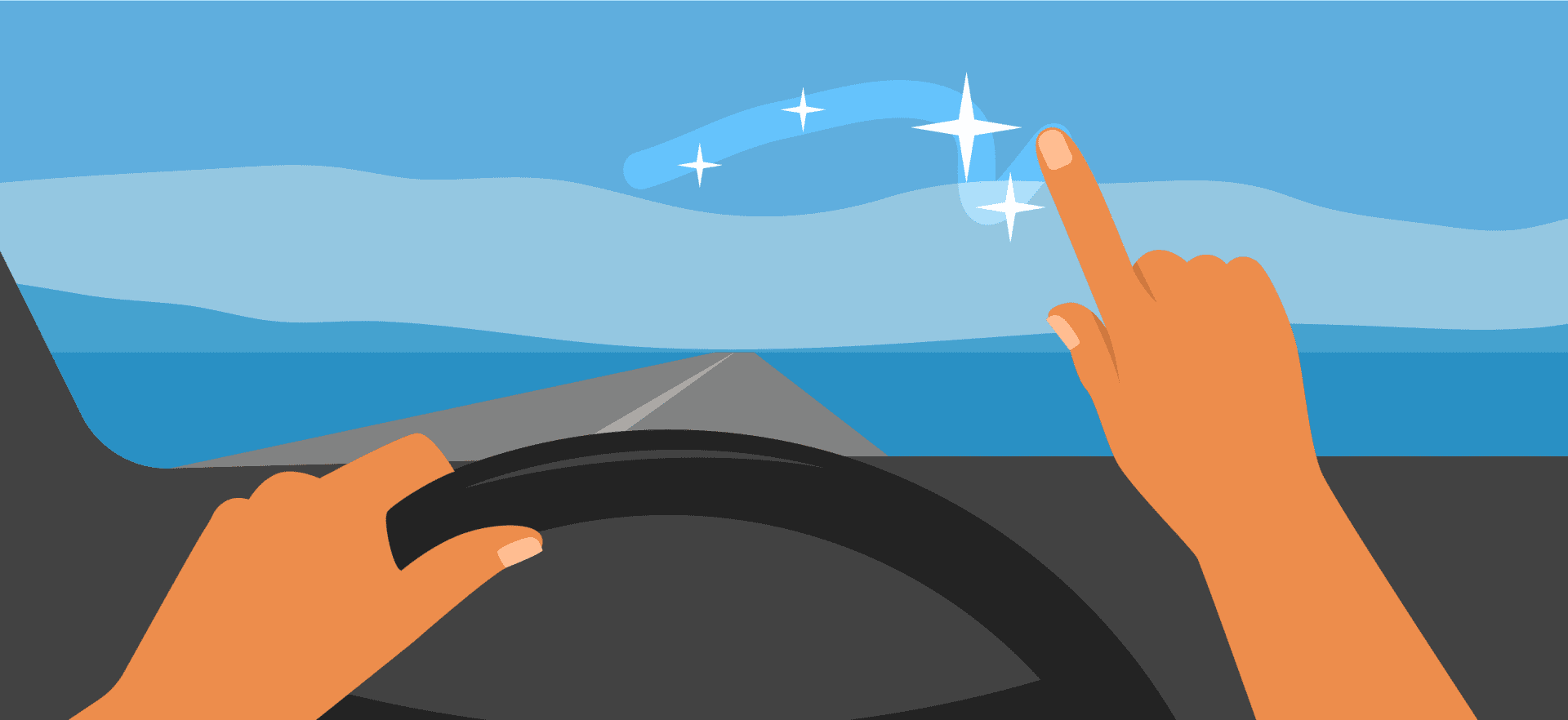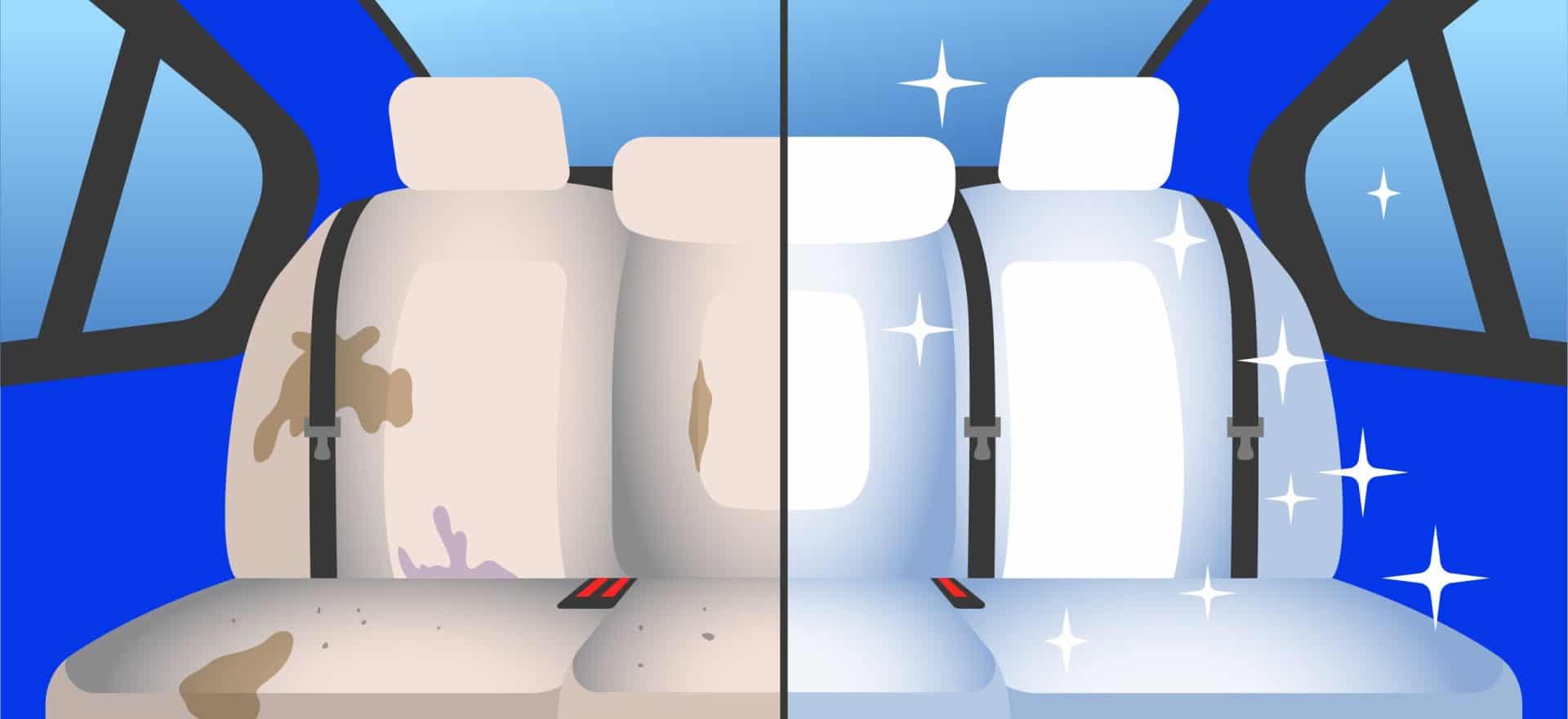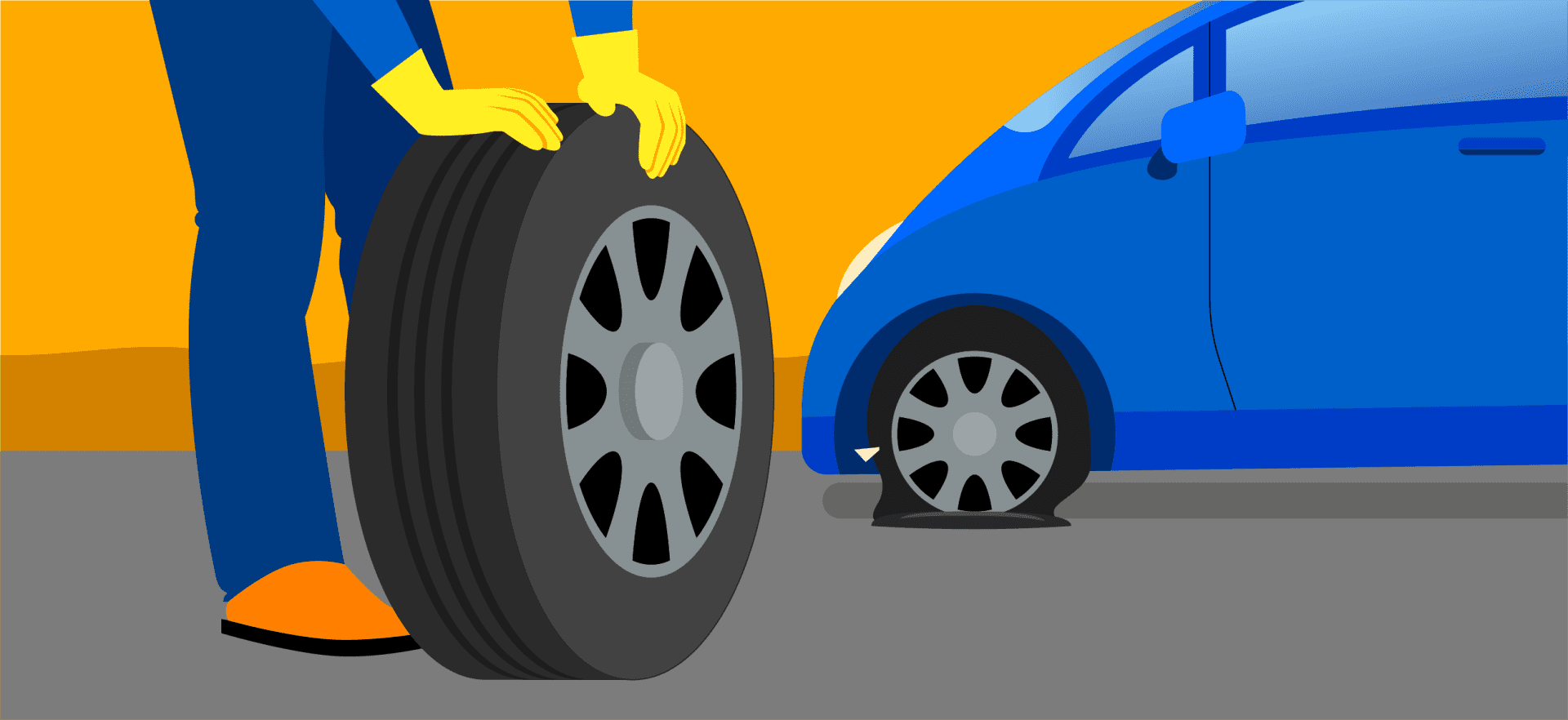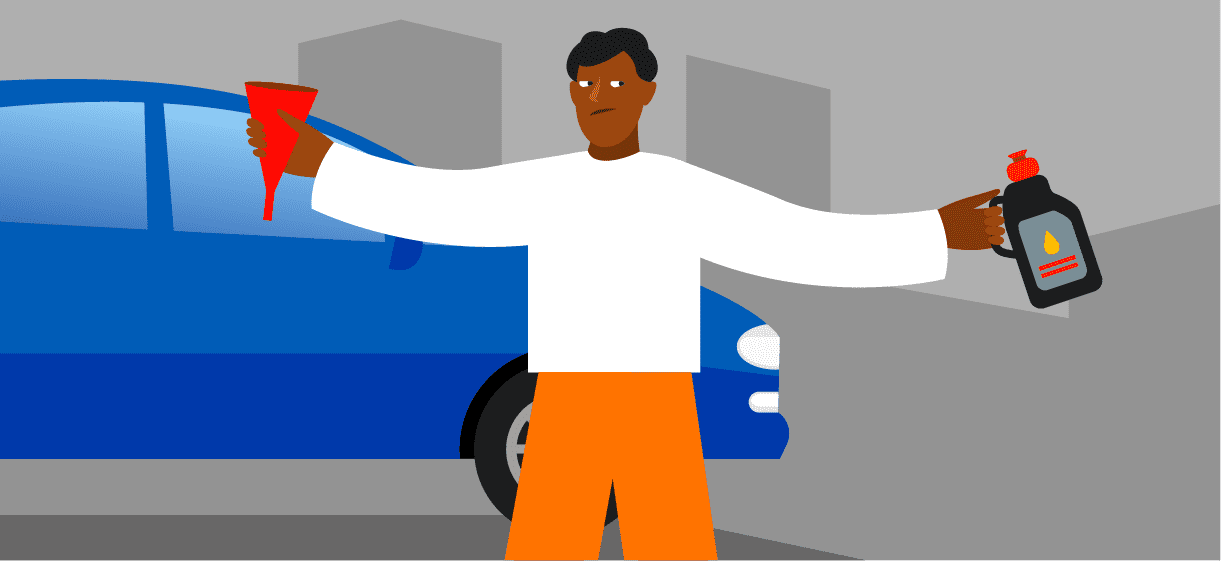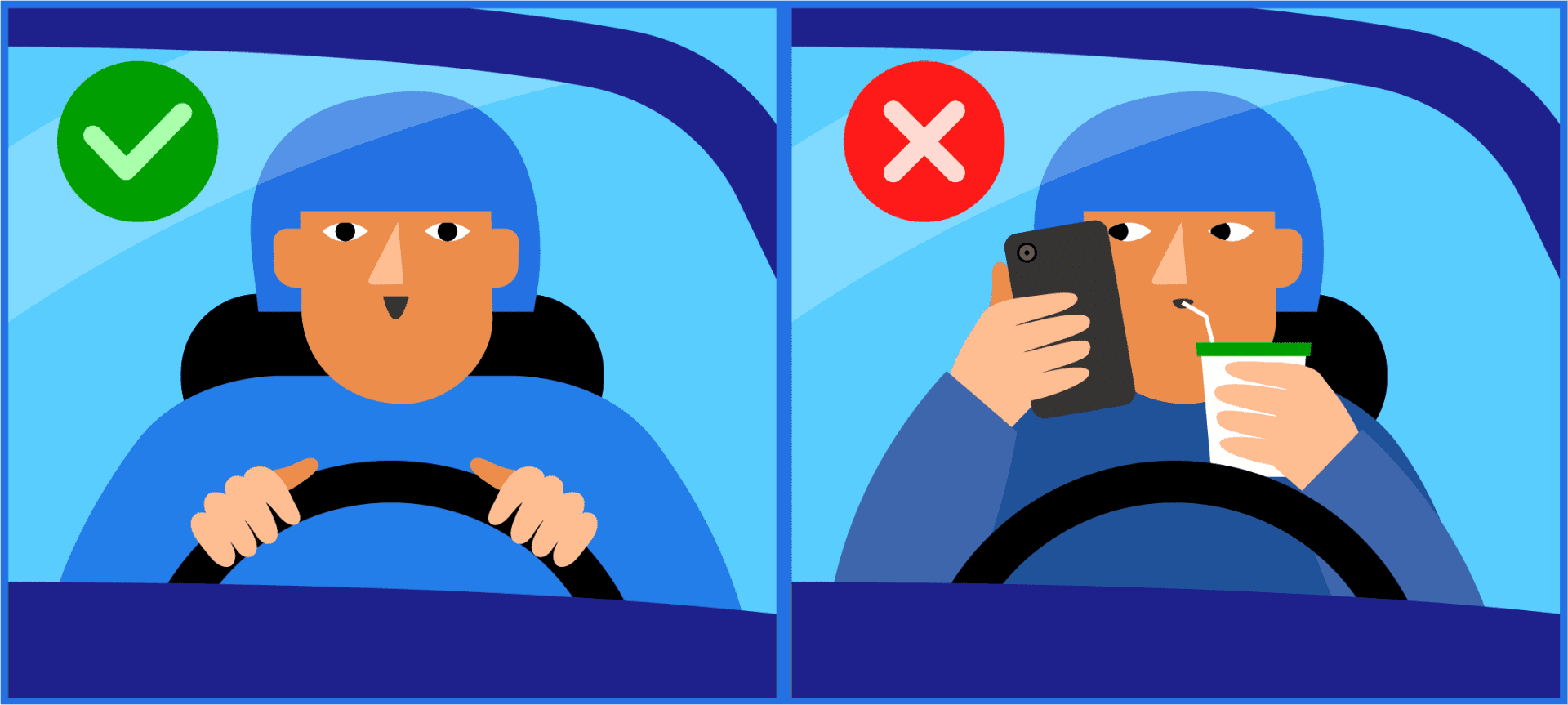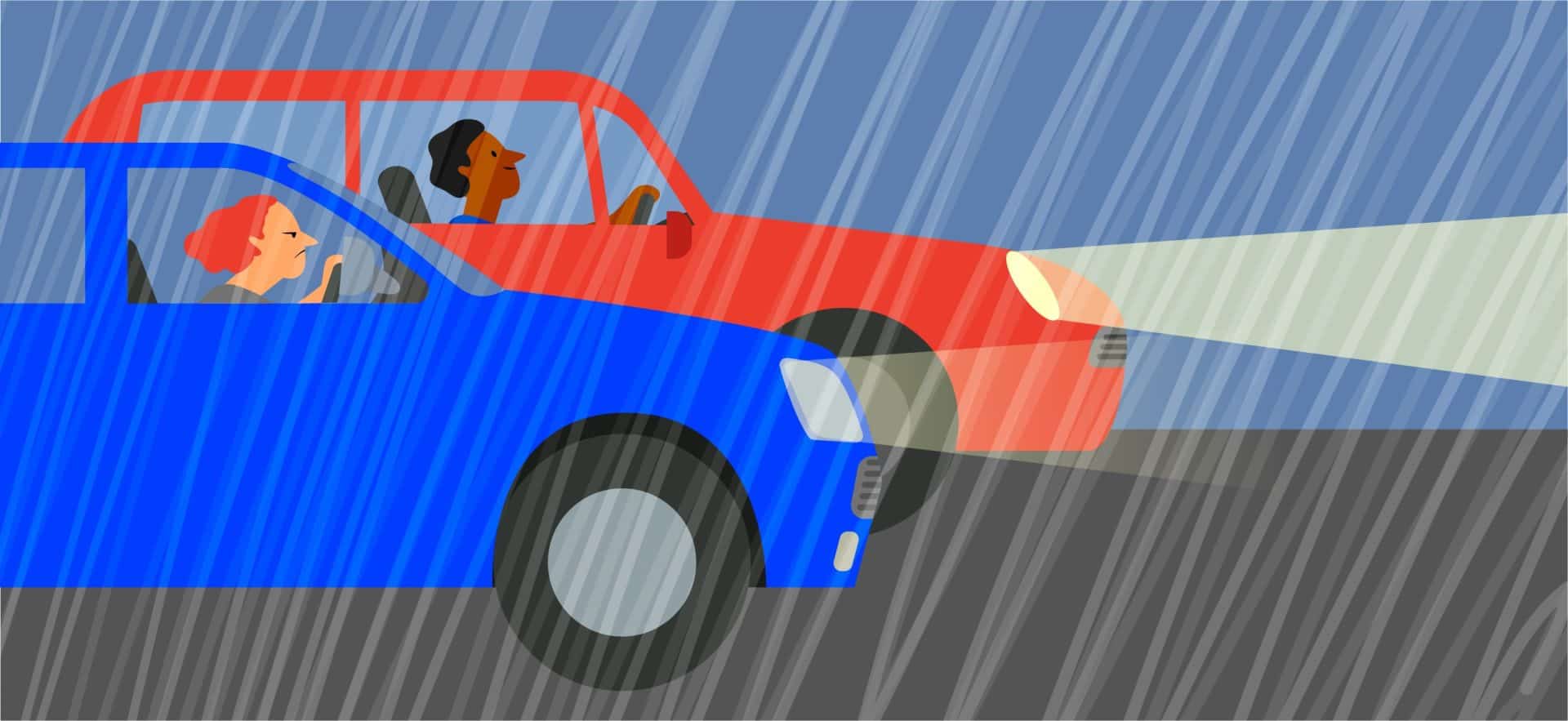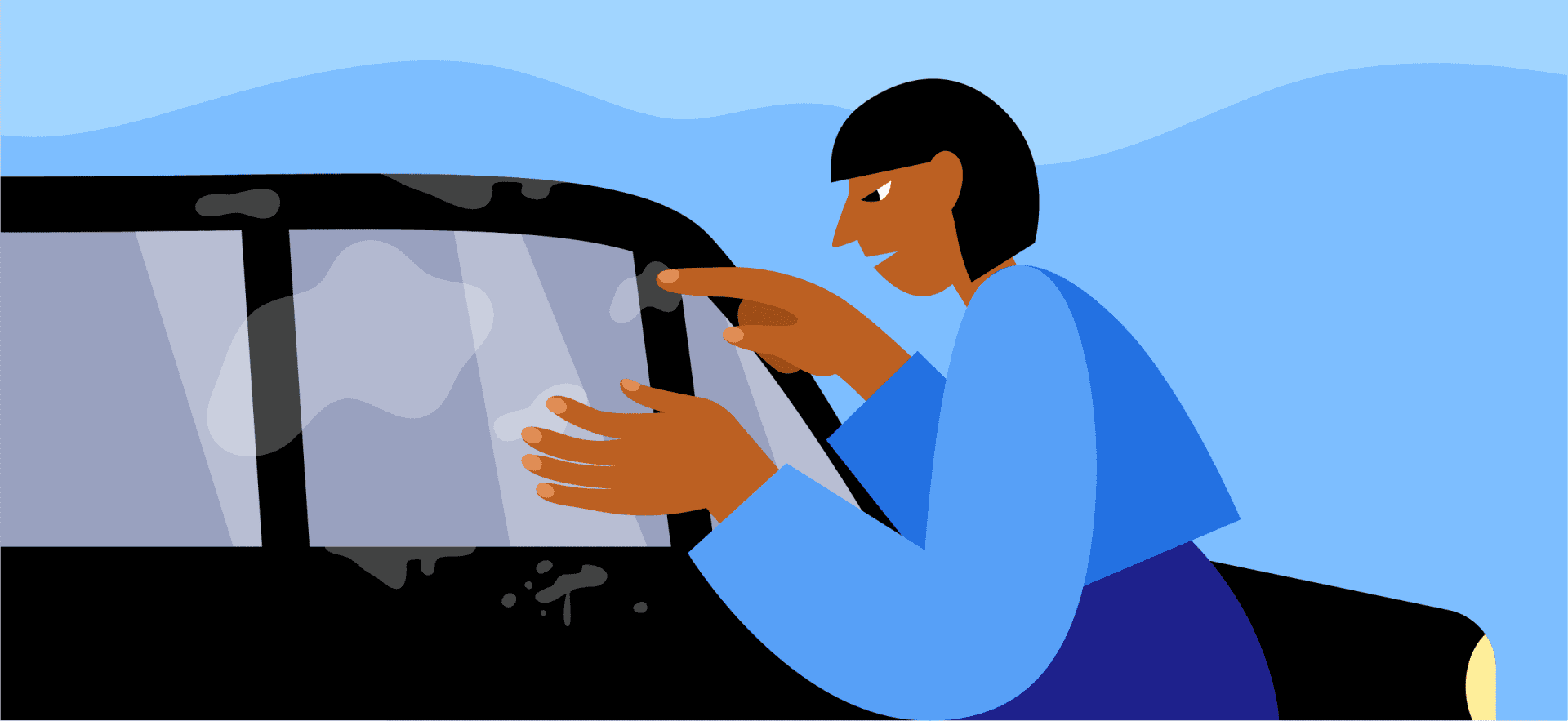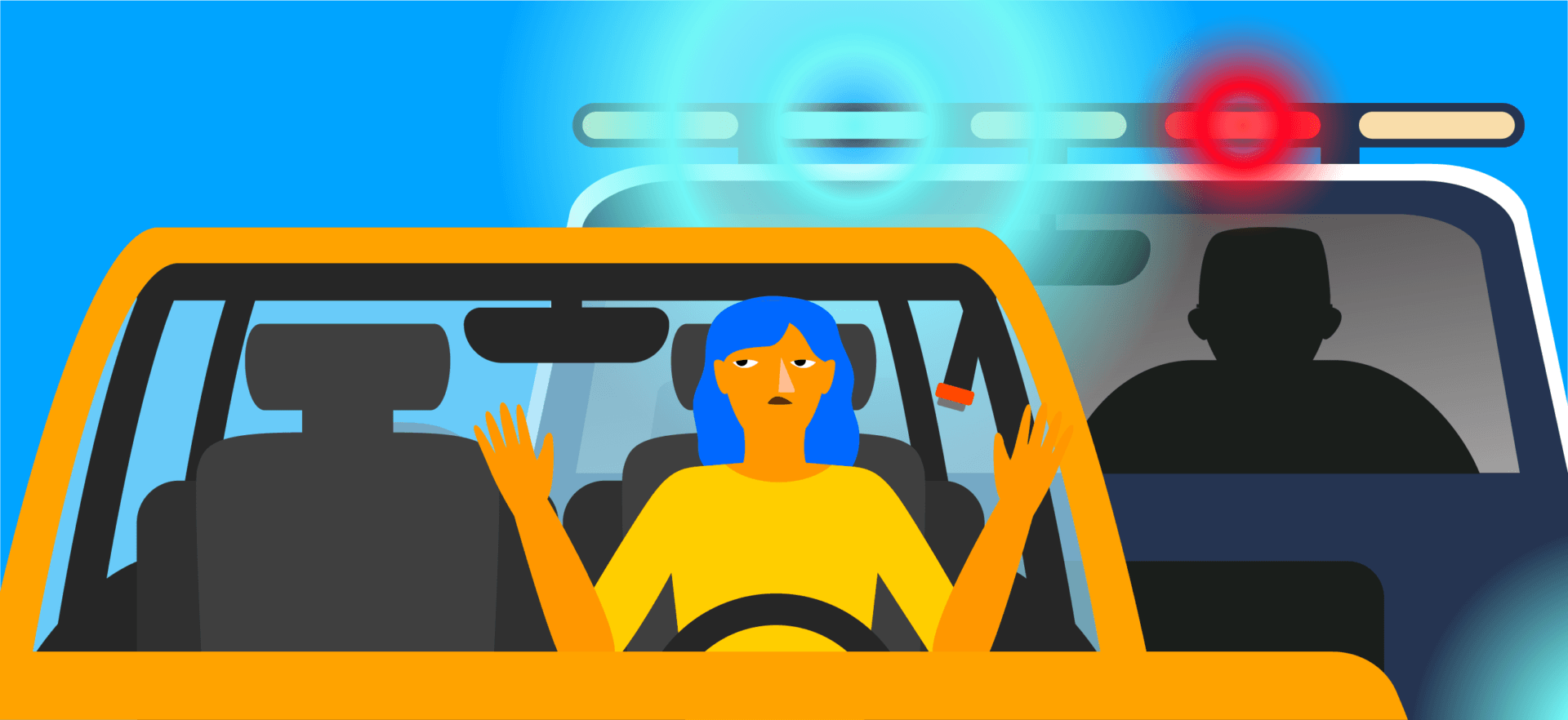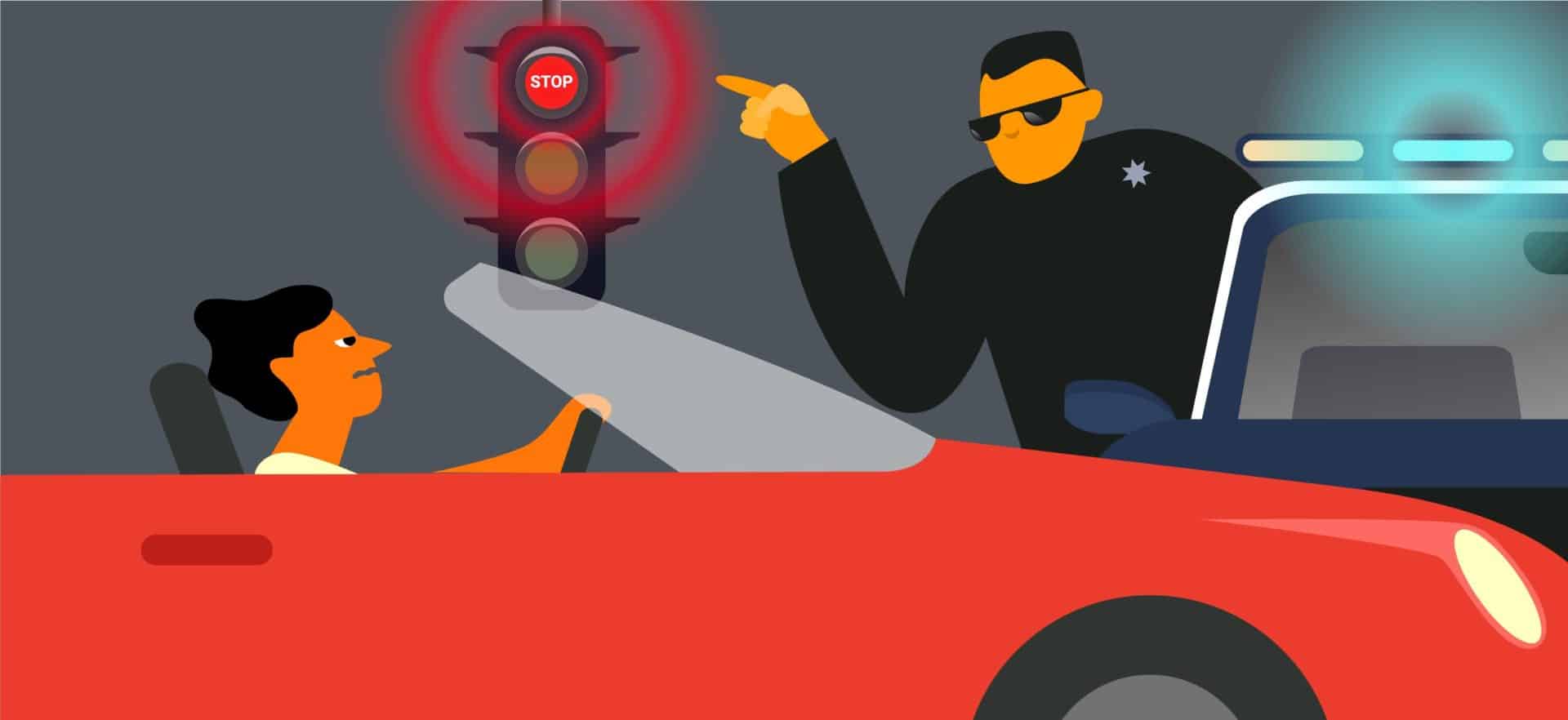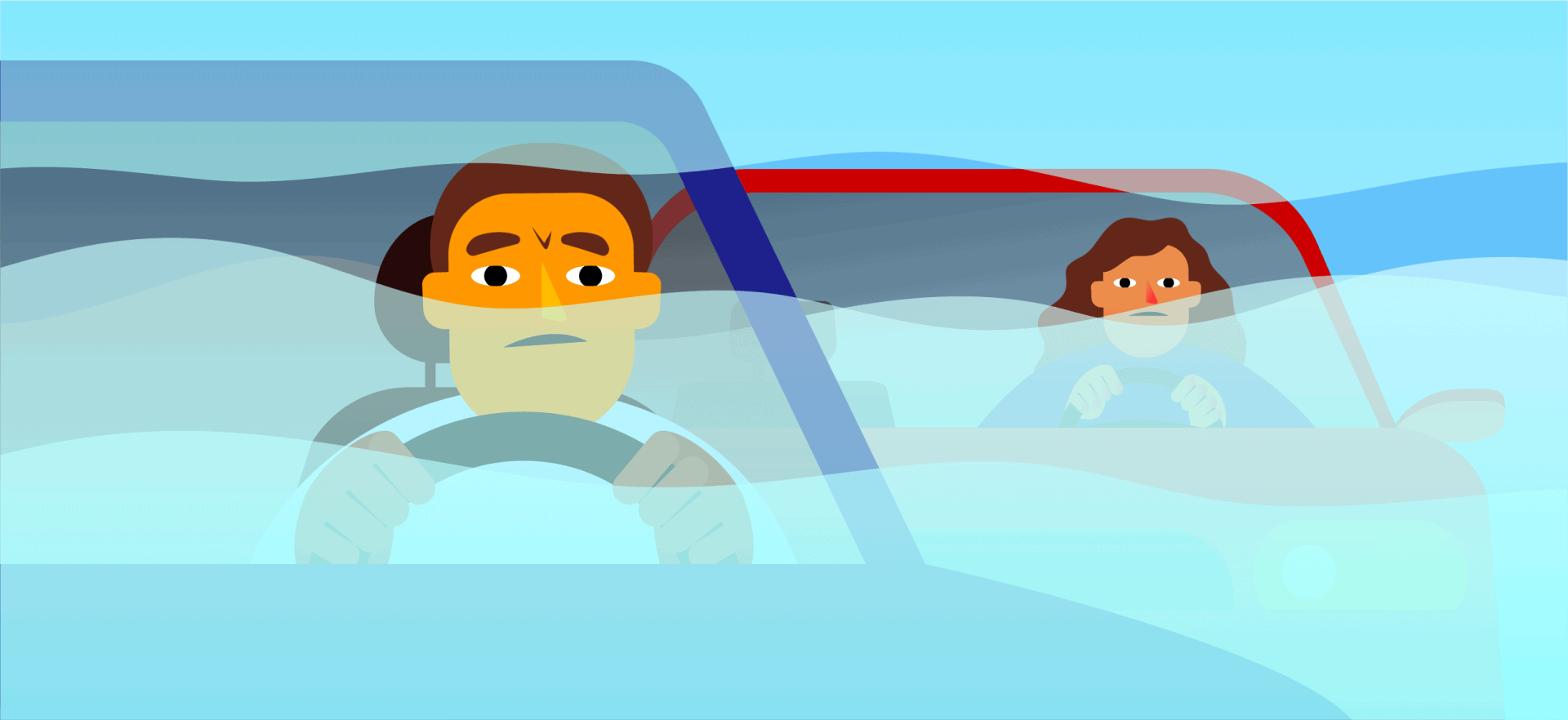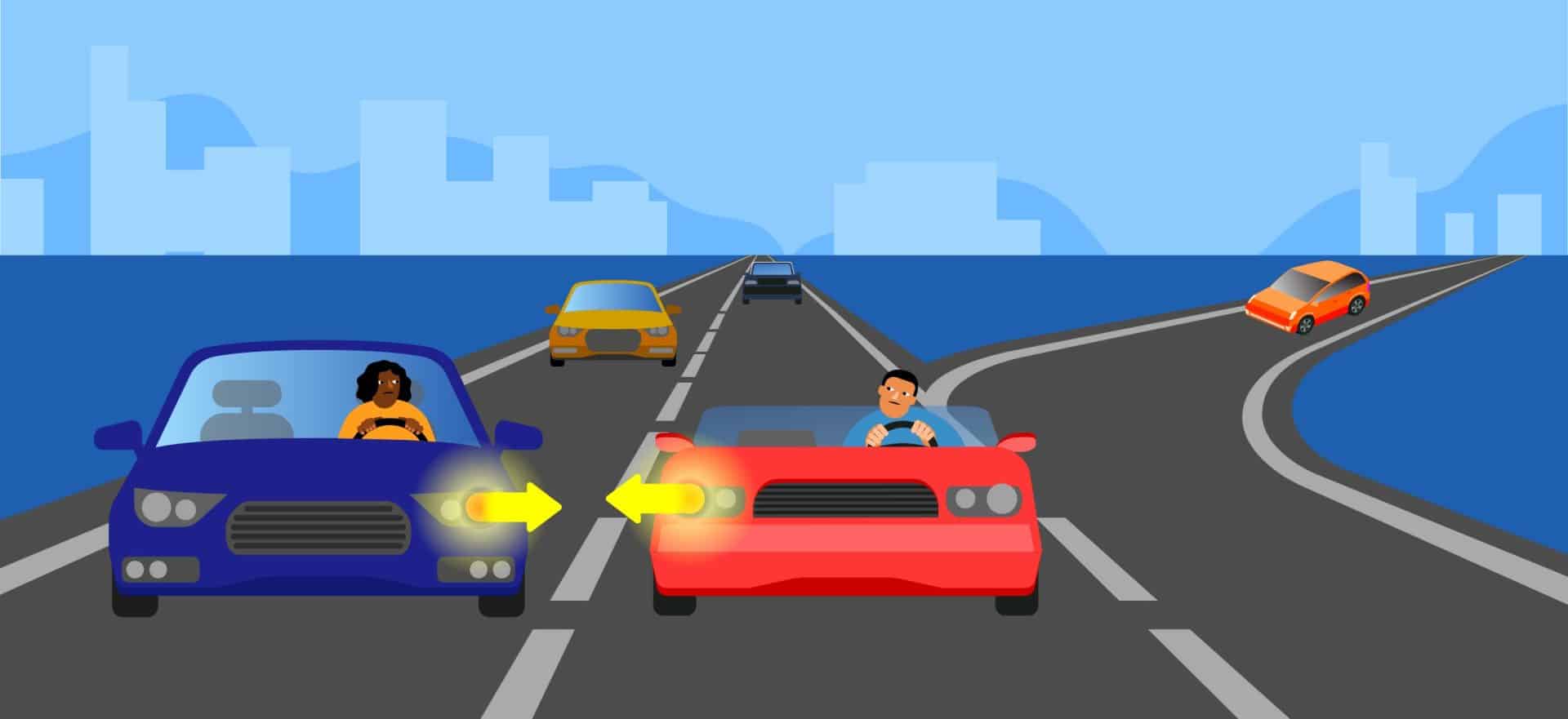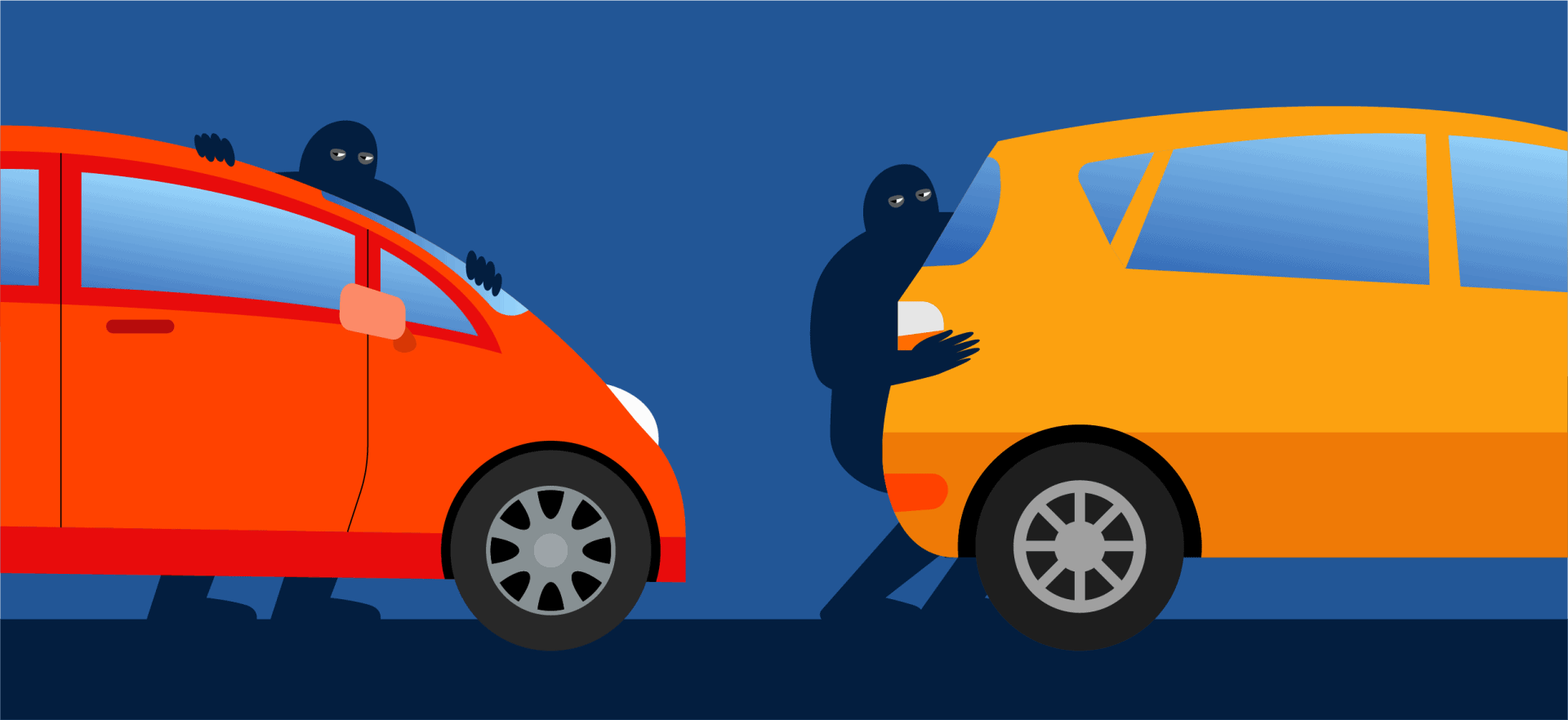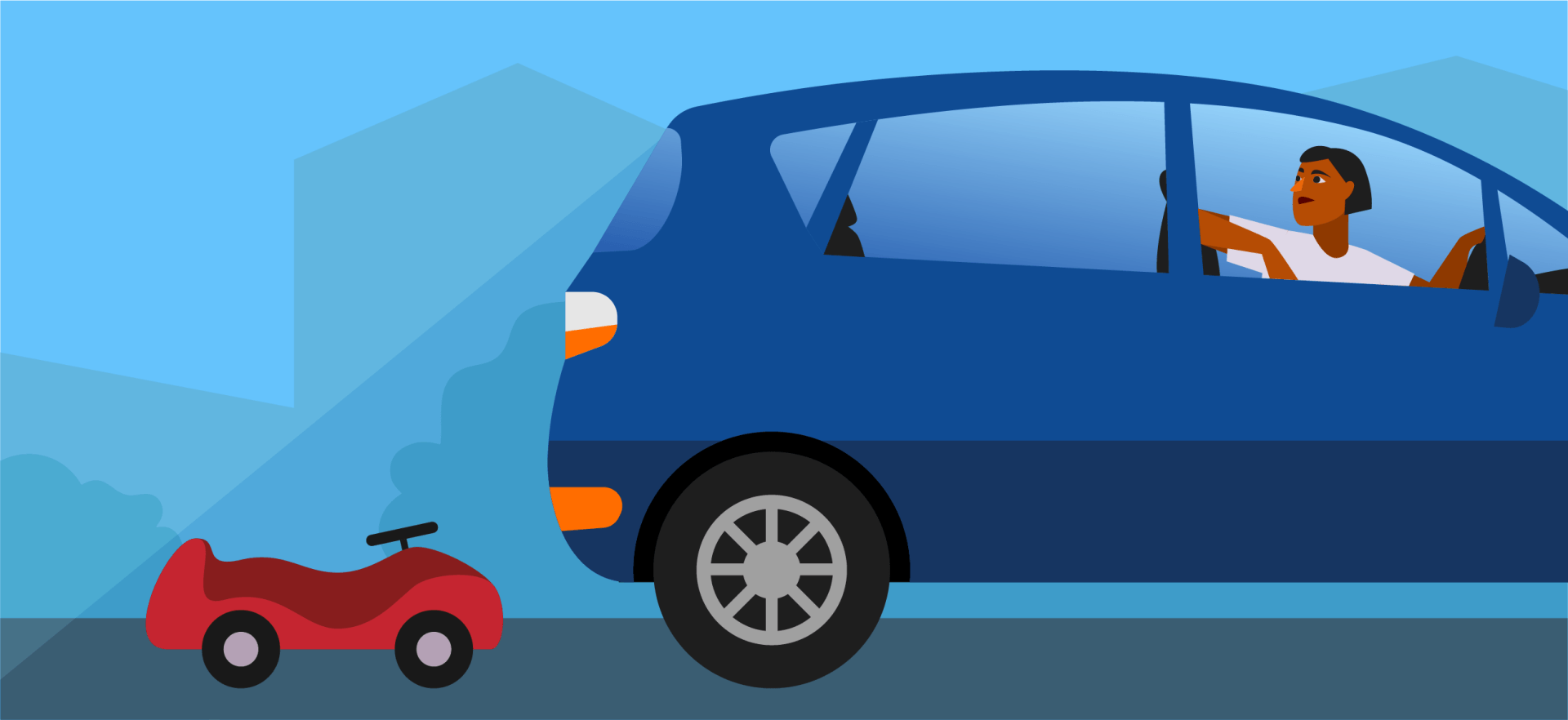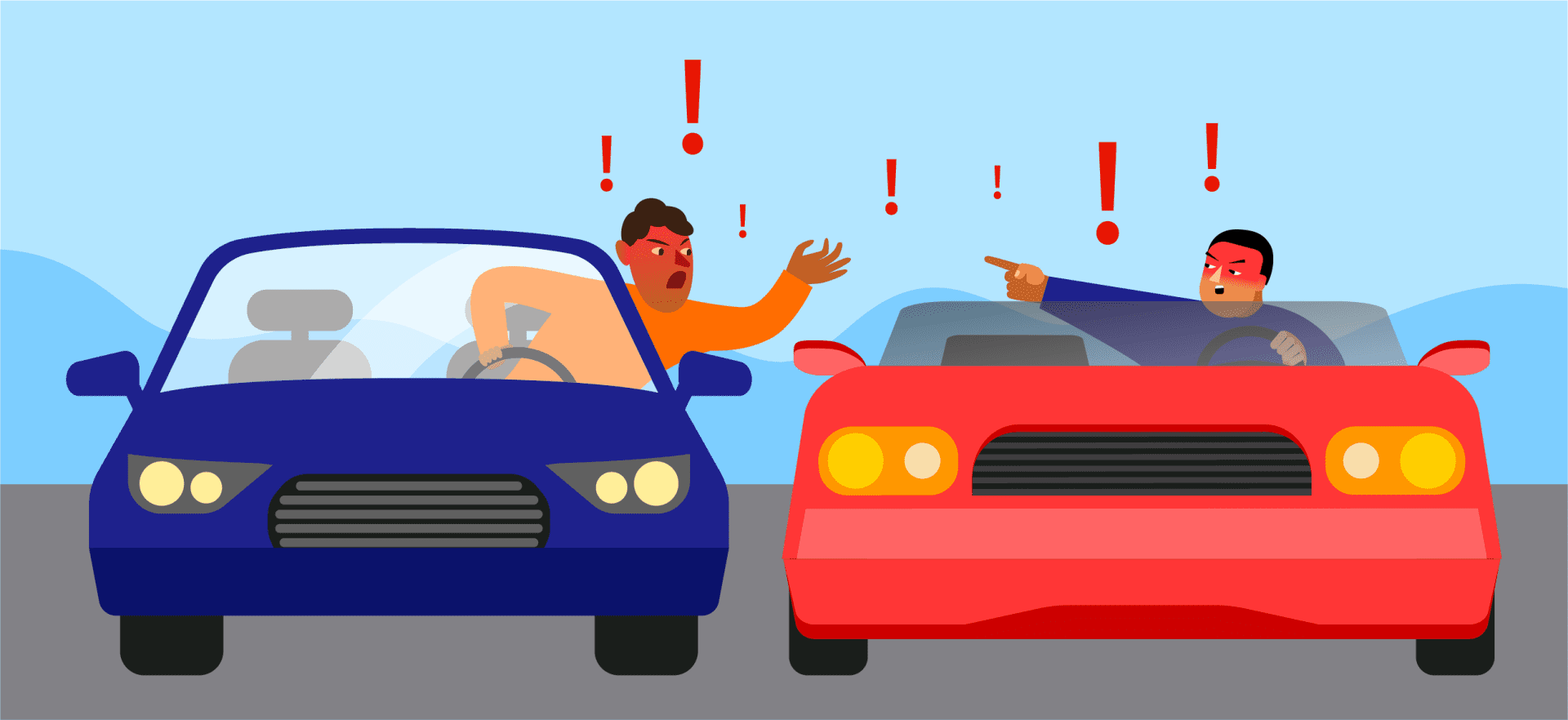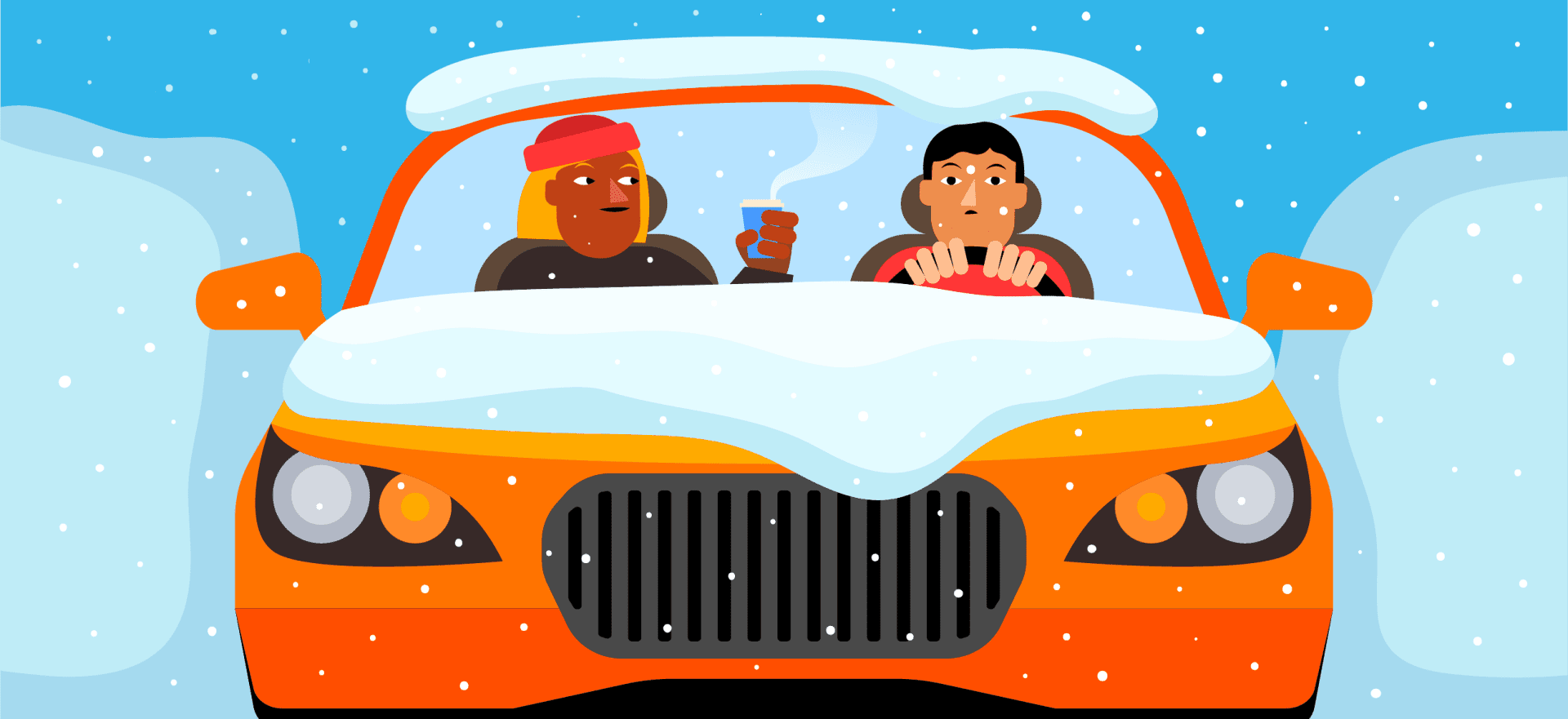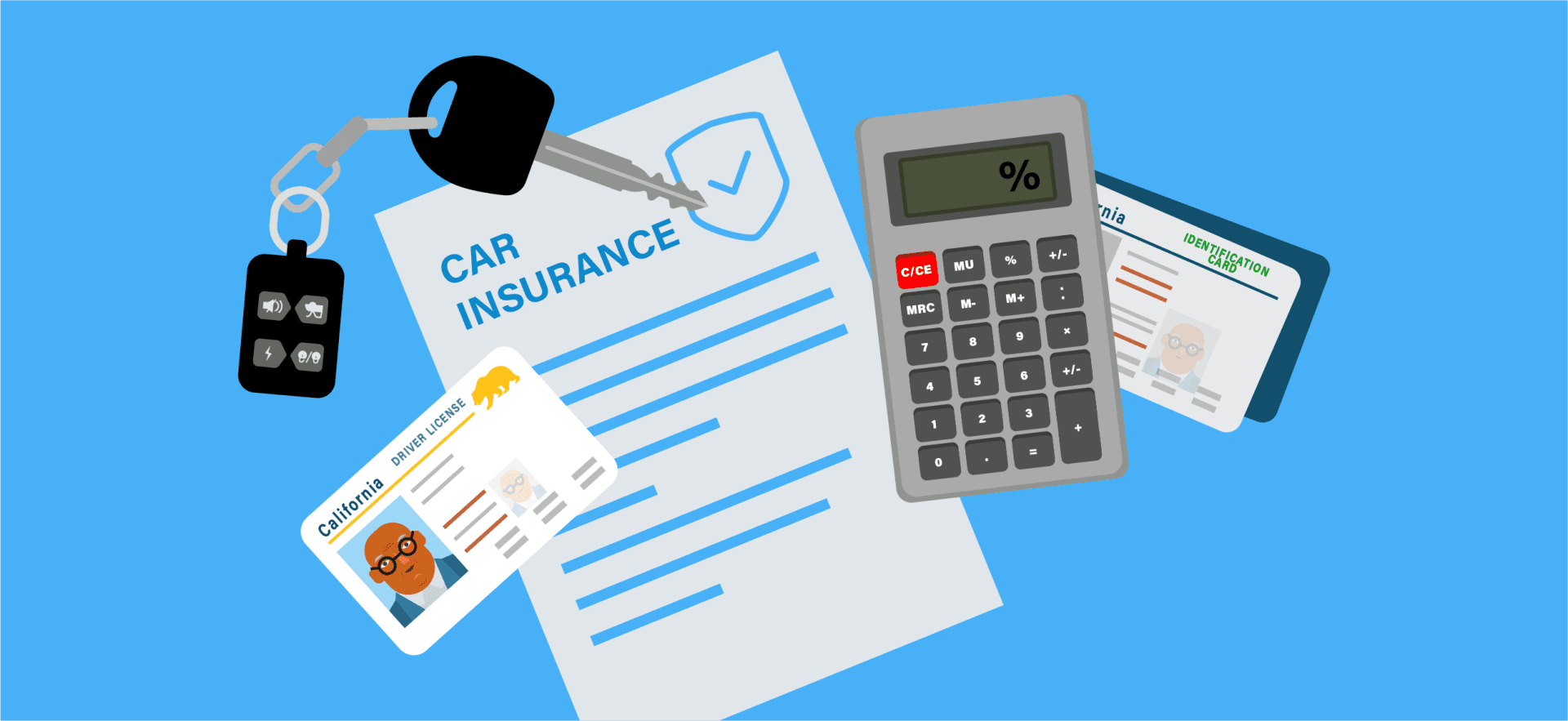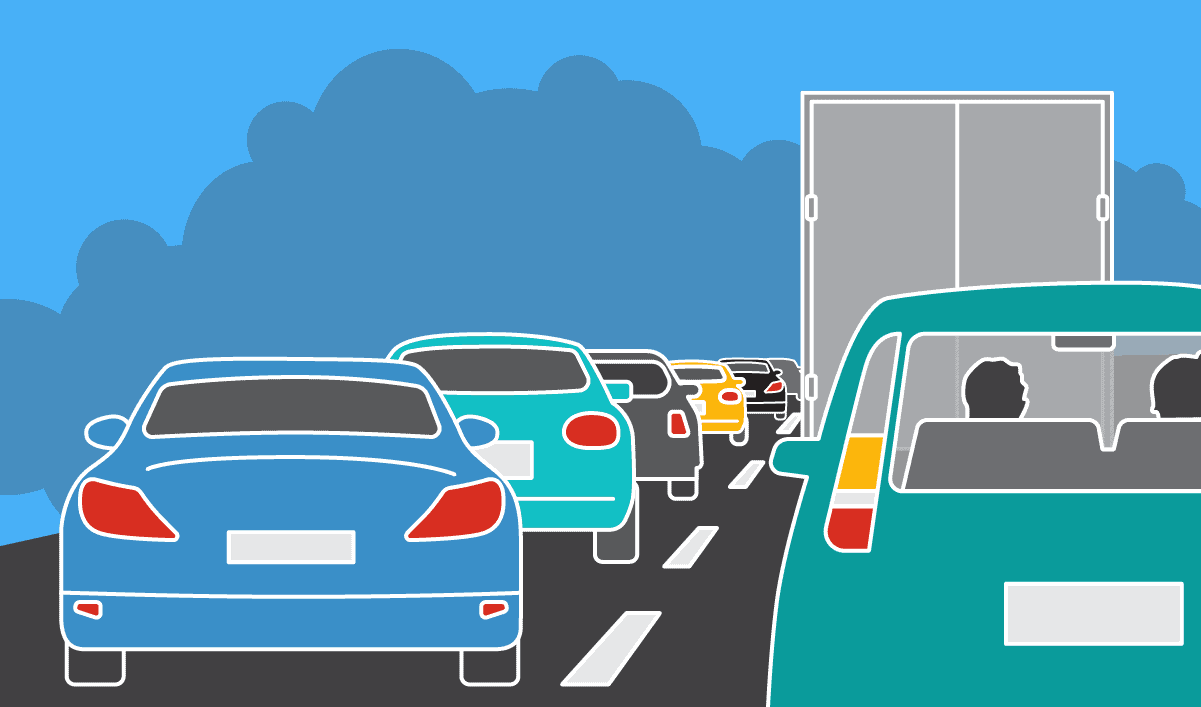Thanks to the efforts of educational groups like Mothers Against Drunk Driving (MADD), the U.S. has seen a staggering reduction in deaths from accidents caused by driving under the influence — a 50% reduction since 1980.
But the problem is still far from being solved. In fact, drunk driving-related deaths are on the rise again.
In 2020 alone, 11,654 people died in alcohol-impaired driving deaths — a 14% increase from 2019. All of these deaths were preventable, but to stop drunk driving, we must continue to draw attention to its deadly effects, educate drivers, and support organizations working within communities to prevent it.
In our new infographic, we highlight some of the starkest statistics about drunk driving, including the latest research that illustrates the immense impact of reckless behavior behind the wheel.
See more: Distracted Driving Statistics
Drunk Driving Statistics 2024 [Infographic]

Drinking and driving falls into two categories: Driving Under the Influence (DUI), and Driving While Intoxicated (DWI). DUI and DWI both mean that a person operating a motorized vehicle has a blood alcohol content (BAC) of .08 or higher.
While the legal limit for driving in .08 BAC, even a small amount of alcohol can impact your driving abilities — a BAC as low as .02 to 0.5 can impair your judgment and cause you to feel uninhibited, impacting your ability to make safe decisions while behind the wheel of a vehicle. It’s also important to note that alcohol can take 30 minutes to 2 hours to be absorbed into the bloodstream after you drink it, which means your BAC can continue to rise for some time even after you stop actively drinking. This is why driving after drinking any amount is dangerous and should be avoided whenever possible.
DUI and DWI are serious crimes that can carry harsh legal penalties. But it’s also important to note that drinking and driving can be fatal, both for the driver and for innocent bystanders who encounter a drunk driver.
Traffic school can help you keep a clean driving record, prevent insurance increases, and more!
How Alcohol Affects Driving Abilities
Alcohol, even in small amounts, causes physical and psychological changes that can impact your ability to safely operate a motor vehicle. Below are just some of the ways that drinking can affect your driving abilities.
1. Slower Reaction Times
Drinking slows down your reaction time, which can impact your ability to make quick driving maneuvers — like slowing down, stopping, or steering — in response to sudden hazards.
2. Lack of Coordination
Drinking affects your motor skills, which includes your coordination. When drunk, most people struggle to stand up straight or walk in a straight line. Behind the wheel, where safe driving means coordinating hand, eye, head, and leg movements, losing coordination can quickly become deadly.
3. Reduced Concentration
Driving a vehicle requires the ability to concentrate on your car, the road ahead of you, any other vehicle around you, and your surroundings. Alcohol inhibits concentration, which means you may become distracted while driving or fail to see or hear dangerous hazards on the road.
4. Vision Problems
It’s common for people to have blurred vision and uncontrolled eye movements when under the influence of alcohol. This is especially dangerous while driving, when you need to be able to see where you’re going, as well as judge visual cues that tell you things like speed and distance between objects.
5. Impaired Judgment
Alcohol impairs your judgment and lowers your inhibitions. That means that after drinking, you’re more likely to make potentially dangerous choices than you would be if you were sober. This can be extremely dangerous when driving — being behind the wheel means constantly assessing risk and making choices to keep yourself and other drivers safe on the road.
Consequences of Drinking and Driving
Drinking and driving comes with many potential consequences, including (but not limited to) the below:
1. Higher Insurance Rates
Getting a DUI or DWI conviction can cause your auto insurance rates to skyrocket. A study comparing insurance rates found that, on average, premiums increase 71% after a DUI — more than $1,000 a month.
2. Legal Implications
Being convicted for a DUI or DWI can mean facing jail time or steep fines. Consequences vary by state, but they can be life-altering — particularly for repeat offenders.
3. Losing Your Driver’s License
In many states, being convicted for a DUI or DWI will mean having your driver’s license suspended for a set amount of time. If you get multiple convictions, your license can even be permanently revoked.
4. Injuries and Deaths
The worst potential consequence of drinking and driving is the human cost. Drunk driving crashes cause thousands of injuries and deaths each year. If you get behind the wheel after drinking, you could injure or kill yourself or others.
The Impact of Drinking and Driving
32 People Die in Drunk Driving Crashes Every Day in the U.S.
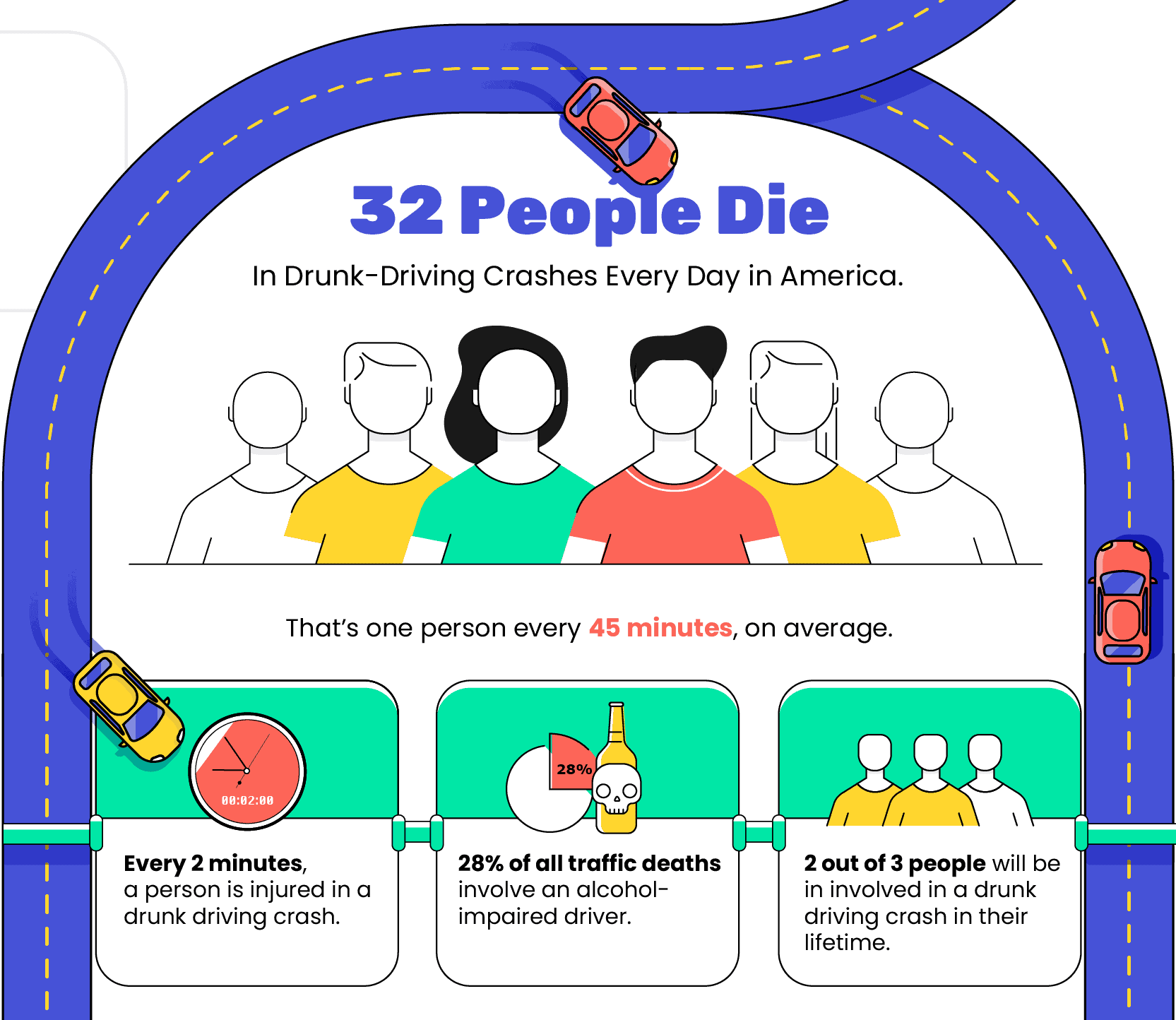
Even though drunk driving deaths have declined since their peak in the 1980s, they’ve been increasing in recent years. Due to drunk driving, 32 people died every day in 2020 in the U.S. alone.
That means that one person was killed every 45 minutes. Every 2 minutes, someone was injured in a drunk driving crash. 28% of all traffic accidents in the U.S. involve at least one alcohol-impaired driver, and the Centers for Disease Control and Prevention estimates that ⅔ of people will be involved in a drunk driving crash at some point during their lifetime.
11,654 People Died in 2020 from Drunk Driving Crashes
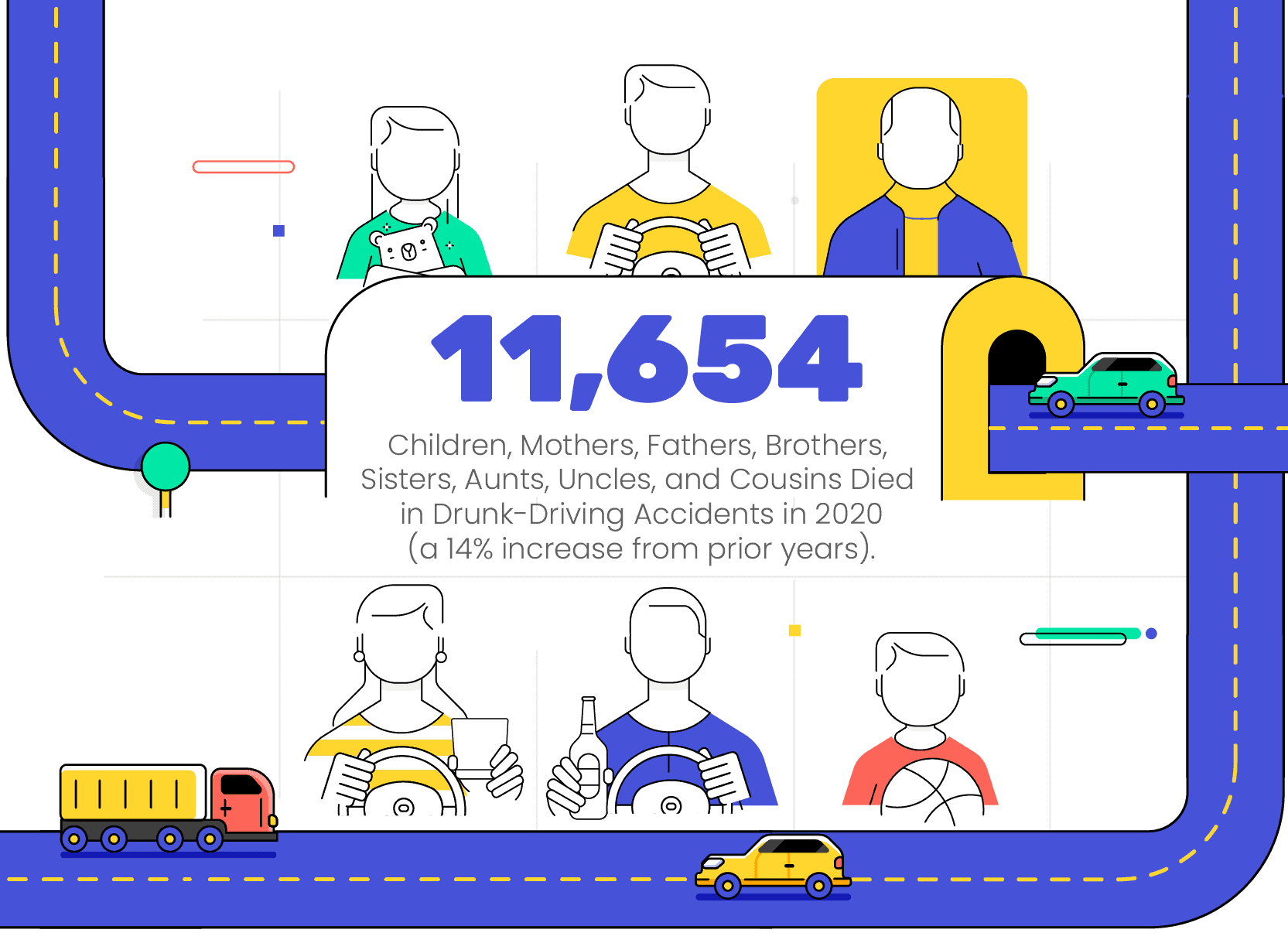
According to the National Highway Transportation Safety Administration, 11,654 people died in drunk driving crashes in 2020, a 14% increase over 2019. In fact, 2020 saw the highest number of drunk driving-related deaths in the last five years.
These numbers are more than just statistics. Every one of those 11,654 deaths represents someone’s family member, friend, neighbor, or coworker. Those who drive while drunk are responsible for the innocent lives they take.
Drunk Drivers Make Our Roads Unsafe

People drink and drive far more than you might think — an estimated 121 million times per year, or 300,000 times every day. However, only 1% of drunk drivers are ever arrested.
The average drunk driver has gotten behind the wheel after drinking 80 times before he or she is arrested. It’s incredibly likely that, if you drive regularly, you will cross paths with a drunk driver at some point in your life.
Repeat Offenders Drive Up Danger

People who engage in risky behavior while under the influence of alcohol once are more likely to do it again. Repeat offenders and people who are driving on an already-suspended license make up a large share of people convicted of drunk driving.
One in three people arrested for drunk driving has a prior conviction. 50-75% of people convicted of a DUI or DWI admit to driving while their license was suspended. And 9% of driver killed in alcohol-related crashes have prior convictions for drunk driving.
We All Pay the Price for Poor Decisions

The U.S. spends $132 billion yearly on motor vehicle crashes — that’s $500 per person per day, and more than double what the country spends on benefits for veterans. However, no price can compare to the human cost of injuries and deaths caused by drunk driving.
Please Drive Responsibly
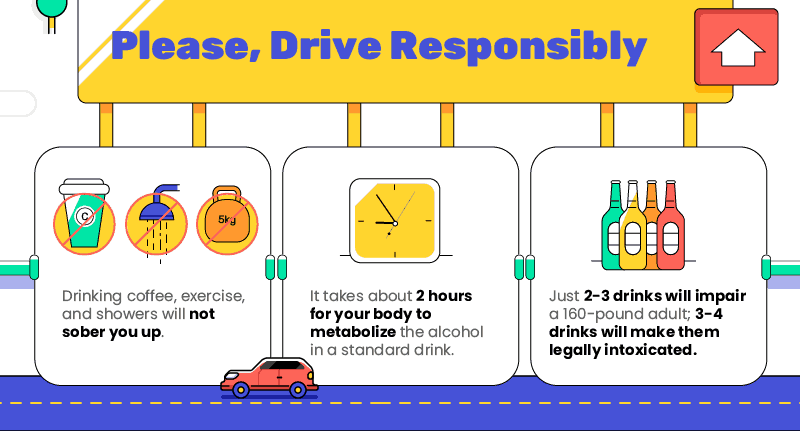
Part of being a responsible driver is understanding how alcohol consumption works and affects the human body. That way, you know you are safe to get behind the wheel every time you do so.
The only thing that helps a person become sober is time. You cannot sober up by drinking coffee, taking a shower, or exercising. You must allow enough time to pass that your body can fully metabolize and process all of the alcohol before you drive after drinking. That takes about two hours if you only have one drink.
A 160-pound adult will be impaired after consuming 2-3 drinks, and legally intoxicated after 3-4. However, those estimates don’t take into account many other factors, such as:
- Women require less alcohol to become intoxicated than men.
- Drinking on an empty stomach will make you drunk faster than if you eat beforehand.
- Drinks aren’t all made the same way — 2 strong drinks could contain 4 or more servings of alcohol.
If you’re going to drive a vehicle, the safest and best choice is to not drink alcohol at all. And if you do choose to drink, make a transportation plan that doesn’t involve driving. Have a designated sober driver, use a taxi or rideshare service, take public transportation, or plan to stay where you are long enough to get completely sober before you drive, even if that means spending the night.
Drunk Driving Prevention Statistics
Preventing drunk driving is something we must all work together to achieve. Education is key — we are all responsible to learn about the terrible consequences of drinking and driving, how alcohol affects each of our bodies, and when it’s safe to get behind the wheel. If you have children of your own or any other young people in your life, make sure to talk to them about the dangers of drunk driving, early and often.
- According to the National Bureau of Economic Research, ride-sharing apps have reduced alcohol-related traffic fatalities in the U.S. by 6.1%.
- Drivers who have a BAC over 0.10 are 7 times more likely to get into a fatal crash than sober drivers. According to the CDC, about 10% of those killed in drunk driving-related crashes each year are children.
Drunk Driving Statistics by State
According to the National Highway Transportation Safety Administration, the states with the highest number of alcohol-related traffic fatalities are:
- Texas
- California
- Florida
The states with the lowest numbers are:
- Rhode Island
- Vermont
- North Dakota
However, it’s important to note that more drunk driving crashes and deaths tend to occur in more densely populated states, rather than ones with lower populations or more rural areas. When adjusted for population density, the states with the highest number of alcohol-related traffic fatalities are:
- Montana
- Texas
- Alaska
- Connecticut
The states with the lowest numbers are:
- Kansas
- Kentucky
- West Virginia
The table below shows each state, and what percentage of its total traffic fatalities are alcohol-related.
| State | Percentage of total traffic fatalities that involves alcohol |
| Alabama | 31% |
| Alaska | 45% |
| Arizona | 35% |
| Arkansas | 34% |
| California | 35% |
| Colorado | 35% |
| Connecticut | 45% |
| Delaware | 32% |
| Florida | 31% |
| Georgia | 30% |
| Hawaii | 39% |
| Idaho | 29% |
| Illinois | 37% |
| Indiana | 32% |
| Iowa | 31% |
| Kansas | 24% |
| Kentucky | 24% |
| Louisiana | 33% |
| Maine | 36% |
| Maryland | 31% |
| Massachusetts | 41% |
| Michigan | 33% |
| Minnesota | 34% |
| Mississippi | 30% |
| Missouri | 31% |
| Montana | 48% |
| Nebraska | 34% |
| Nevada | 33% |
| New Hampshire | 37% |
| New Jersey | 28% |
| New Mexico | 36% |
| New York | 38% |
| North Carolina | 34% |
| North Dakota | 31% |
| Ohio | 32% |
| Oklahoma | 27% |
| Oregon | 37% |
| Pennsylvania | 33% |
| Rhode Island | 42% |
| South Carolina | 32% |
| South Dakota | 38% |
| Tennessee | 28% |
| Texas | 46% |
| Utah | 27% |
| Vermont | 34% |
| Virginia | 35% |
| Washington | 36% |
| West Virginia | 24% |
| Wisconsin | 40% |
| Wyoming | 35% |
Source: https://www-fars.nhtsa.dot.gov/States/StatesAlcohol.aspx
Public Perception of Drunk Driving
Thanks to awareness groups like MADD, most people in the U.S. are aware of the grave and serious consequences that come with drinking and driving.
According to a 2021 survey by the Traffic Injury Research Foundation (TIRF):
- 65% of U.S. drivers are “very concerned” about drunk driving. That’s more than the 59% who said they are “very concerned” about COVID-19.
- Only 5% of drivers said they drove that year when they thought they had a BAC over the legal limit. That’s compared to 40% of drivers in 2020, the highest since 2015.
- Of those who said they drove while drunk 10.5% said they didn’t think they’d get caught. 40.5% said even though they thought they were over the legal limit, they felt they could drive safely.
- Men were 143% more likely to drive drunk than women. They were also 68.4% more likely to admit that they drive while impaired “often” or “very often.”
Underage Drinking Statistics
A larger share of drunk driving fatalities is comprised of young people. In the 2021 TIRF survey, 8% of respondents ages 21-29 reported driving under the influence “often” or “very often,” compared to just 5.6% of those ages 50-59 years. Underage drinking is a serious problem, as these statistics show:
- Alcohol use remains rampant among today’s teenagers. According to Students Against Destructive Decisions (SADD), nearly 3/4 of students have consumed alcohol (more than just a few sips) by the end of high school, and more than a third have done so by eighth grade.
- In the past month, 25% of underage Americans have likely had alcohol.
- Among underage drinkers (ages 12-20), 30.8% paid for the alcohol the last time they drank – including 8.3% who purchased the alcohol themselves and 22.3% who gave money to someone else to buy it. Among those who did not pay for the alcohol they drank, 37.4% got it from an unrelated person of legal drinking age; 21.1% received it from a parent, guardian, or other adult family member.
- Past-month alcohol use rates declined between 2002 and 2008 for those ages 12-13 (4.3% to 3.4%), 14 or 15 (16.6% to 13.1%), 16 or 17 (32.6% to 26.2%), and 18-20 (51.0% to 48.7%).
- Among race demographics, whites had the highest percentage of underage (ages 12-20) past-month alcohol use (30.4%). Asians had the lowest rate at 16.1%.
- In 2008, over half of current underage drinkers (ages 12-20) reported that their last use of alcohol occurred in someone else’s home, while a third said that it happened in their own home.
- Drinking and driving is one of the leading causes of death among teens. An alcohol-related crash or death involving a teen happens every 30 minutes in the U.S.
- Nearly a third of high school students have ridden in a car one or more times with someone who had been drinking alcohol.
Please note that those convicted of alcohol-related offenses are not eligible for traffic school.

